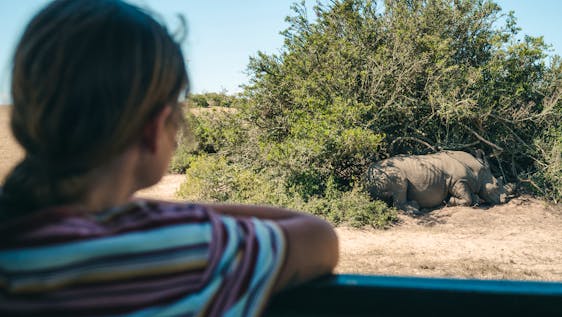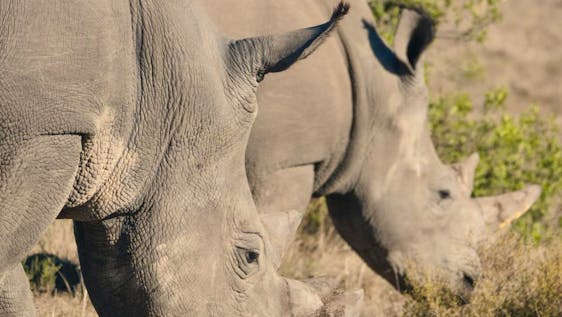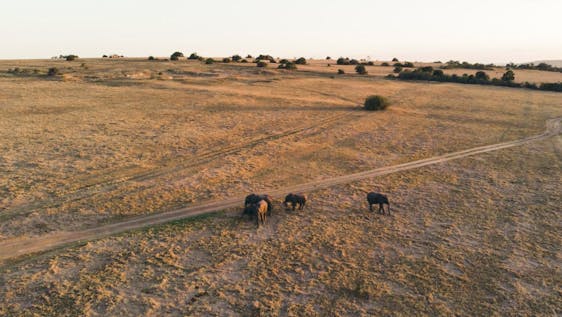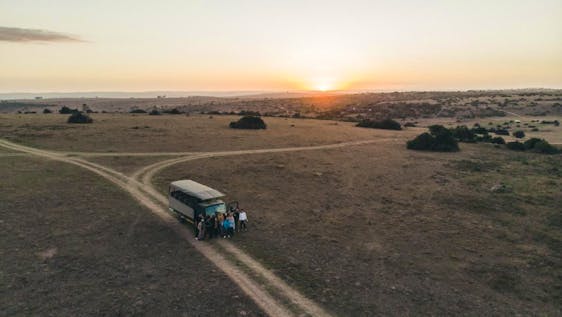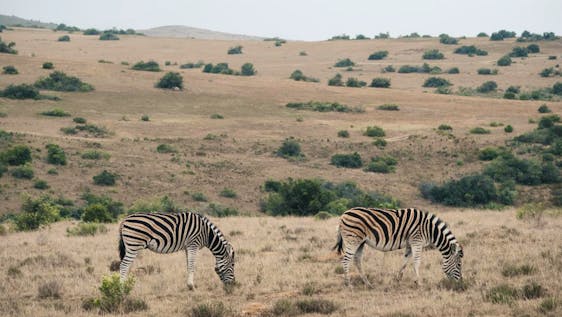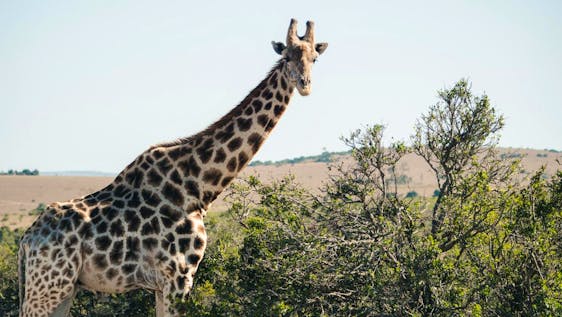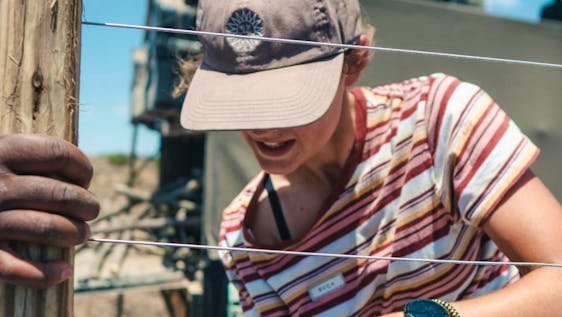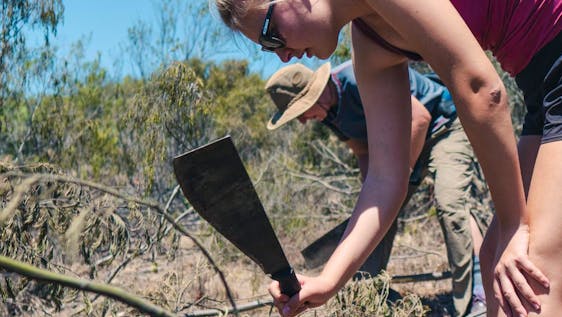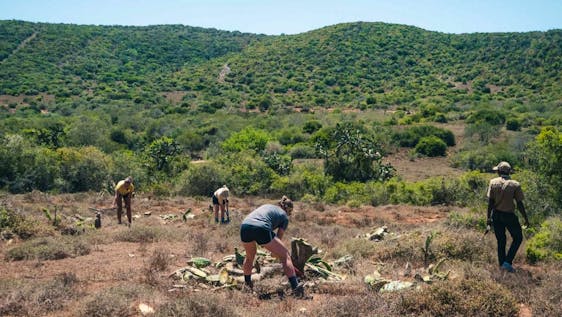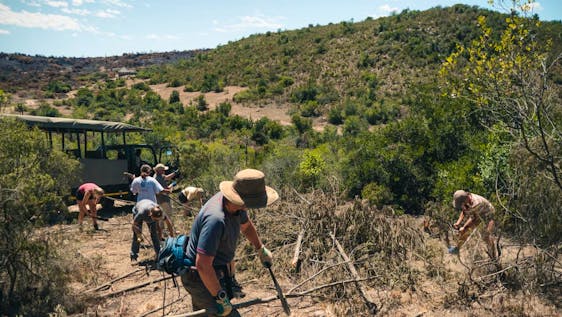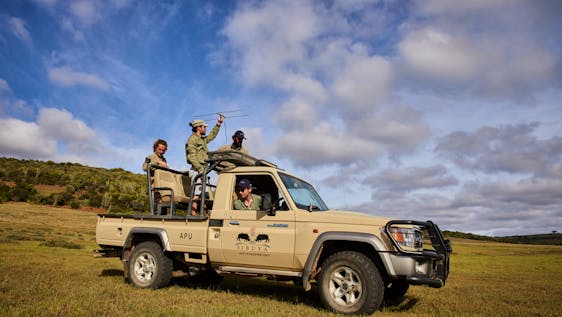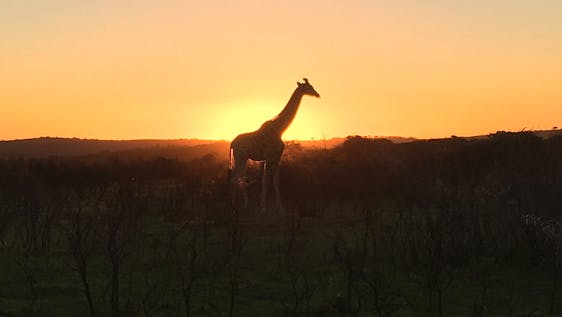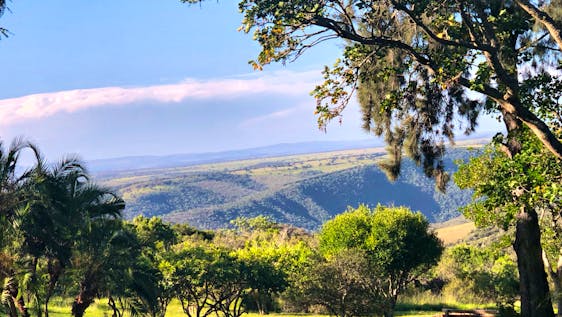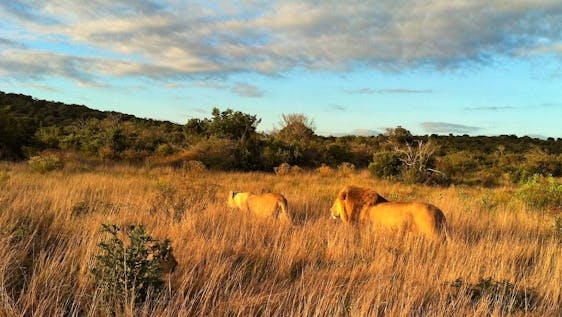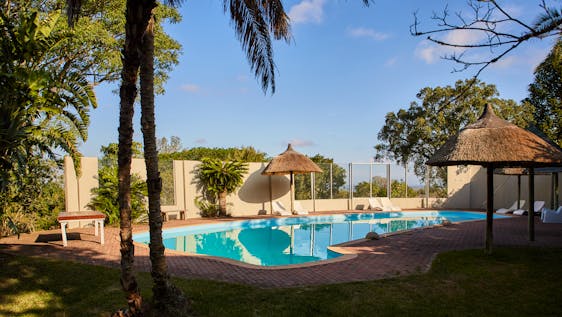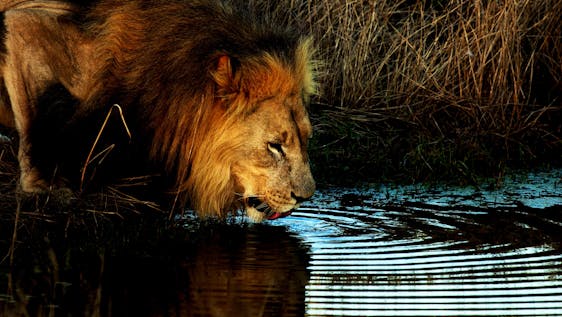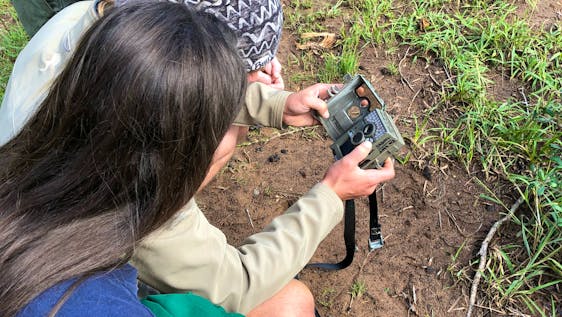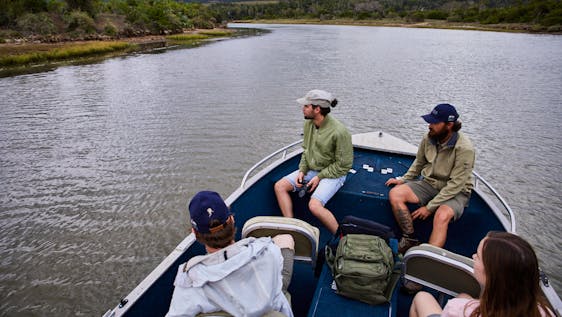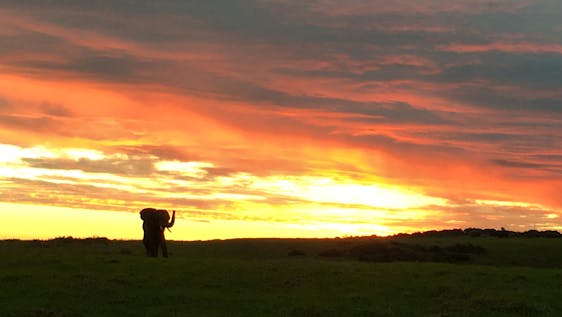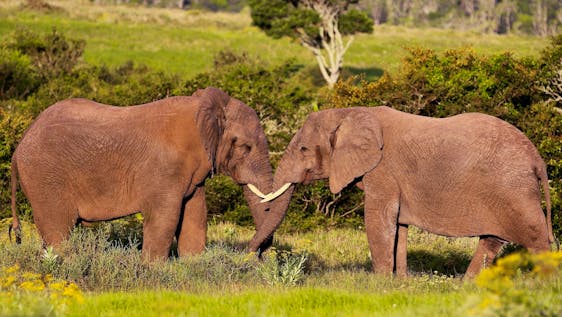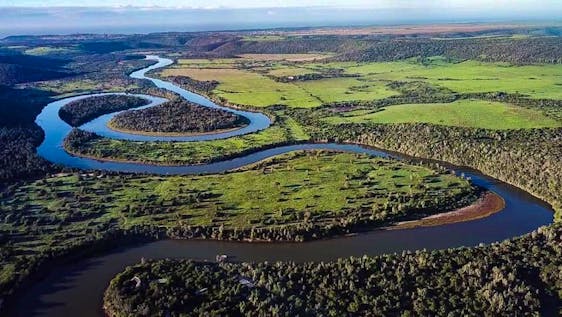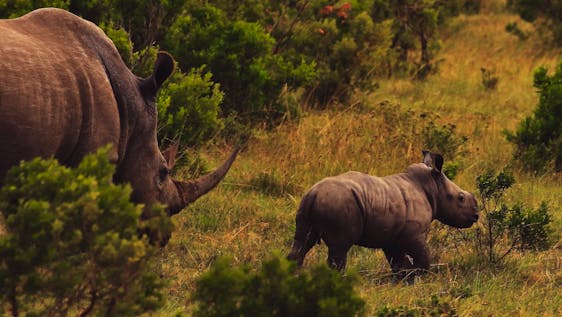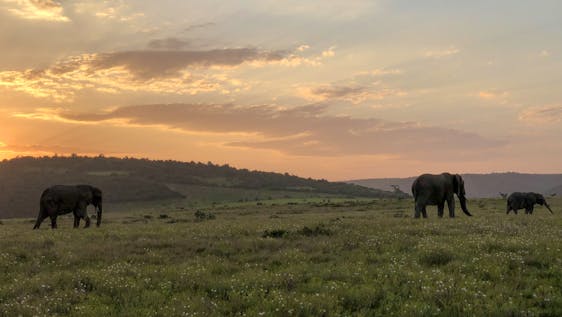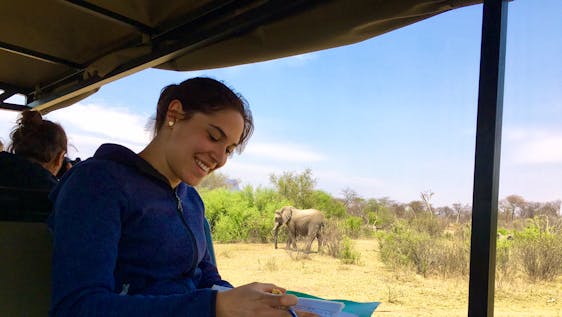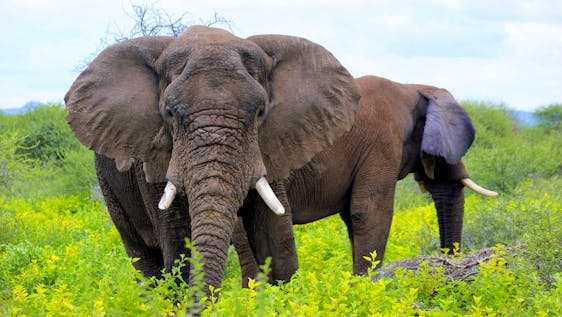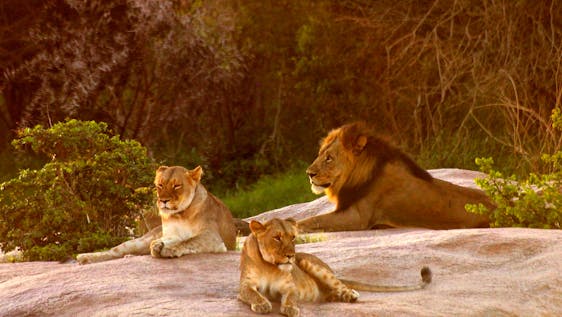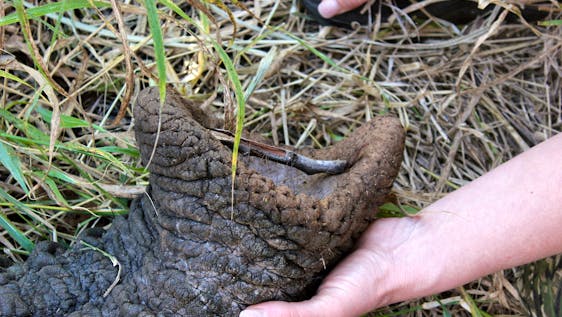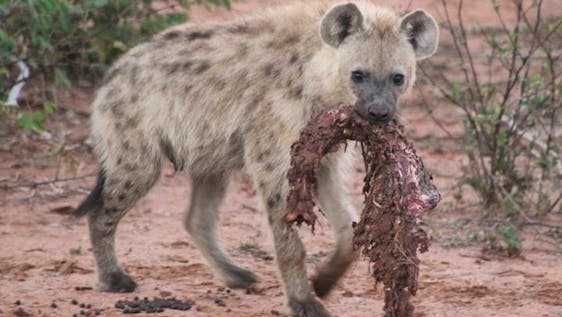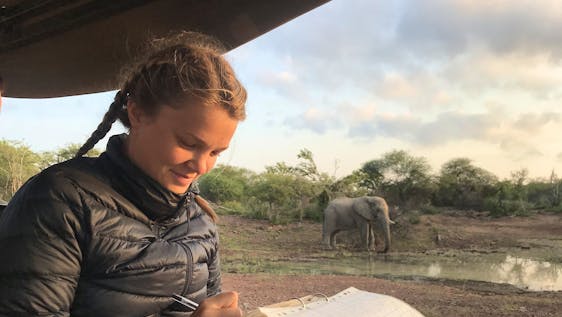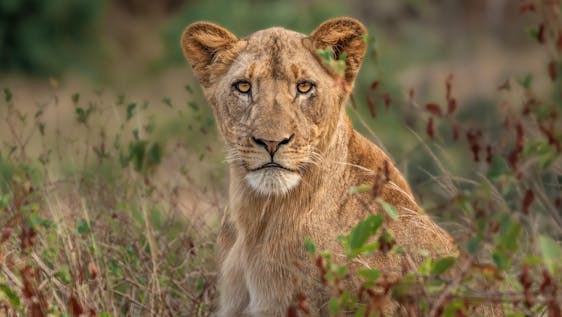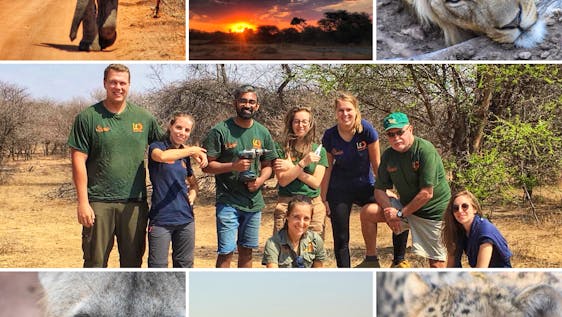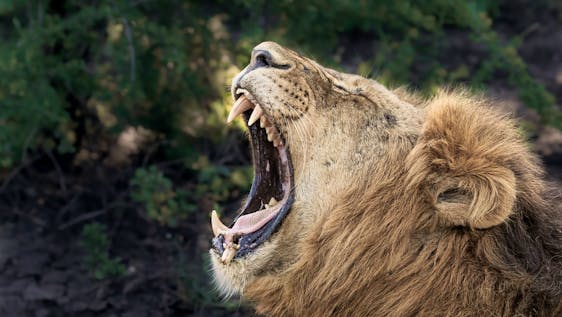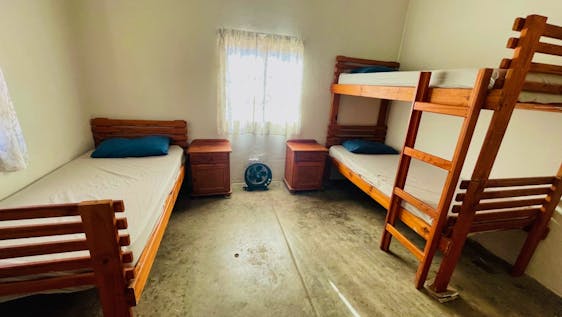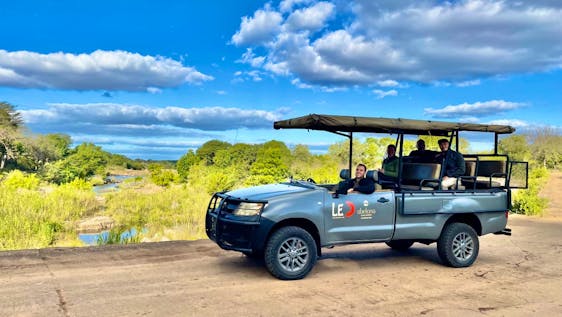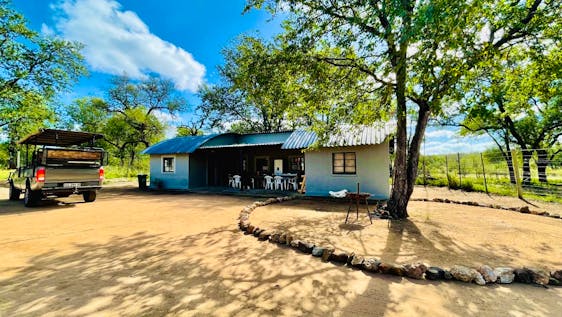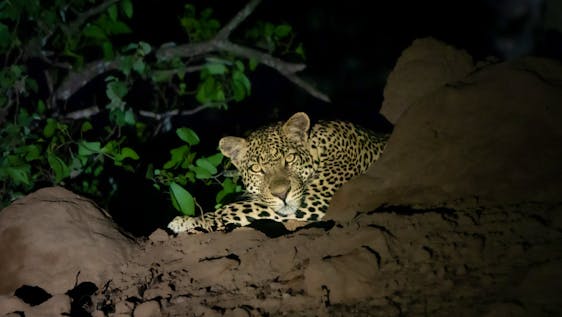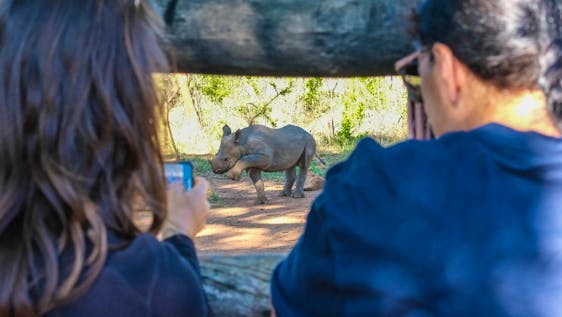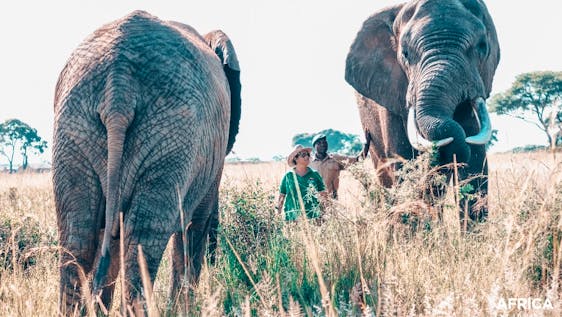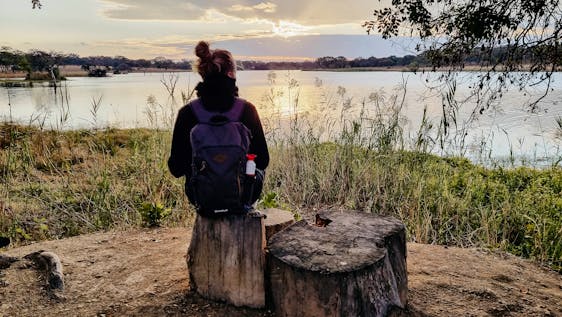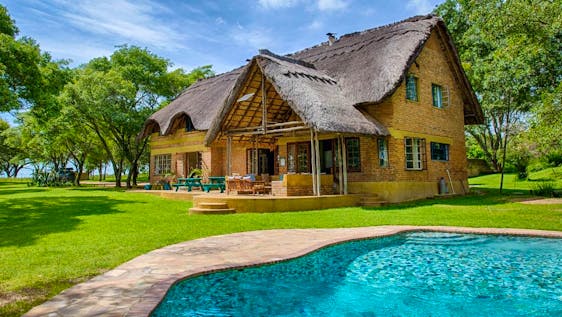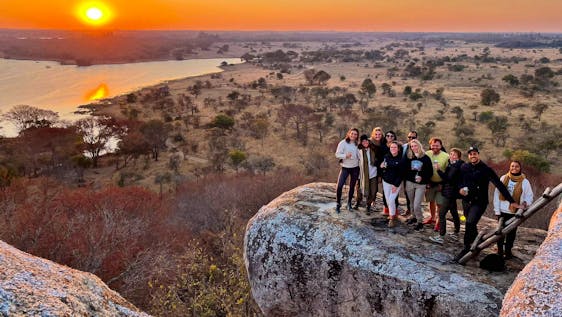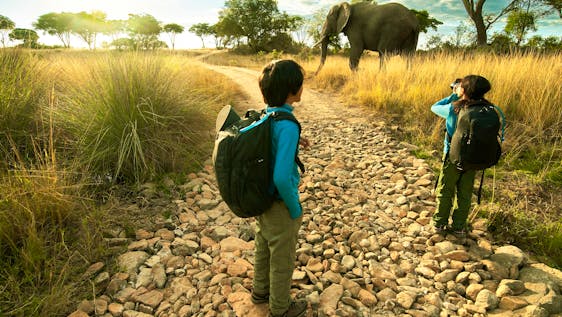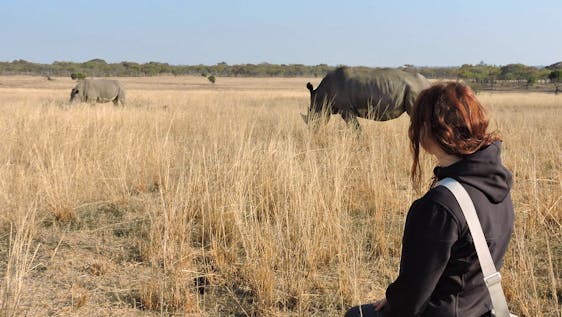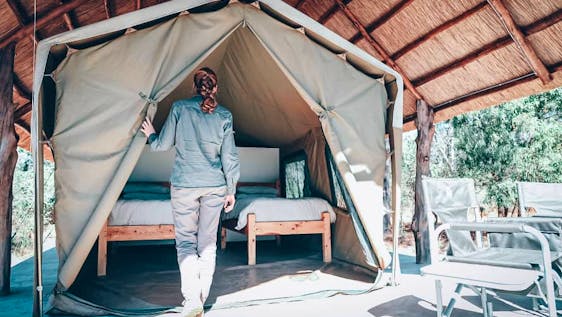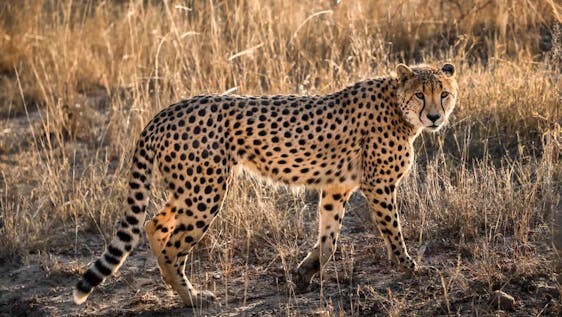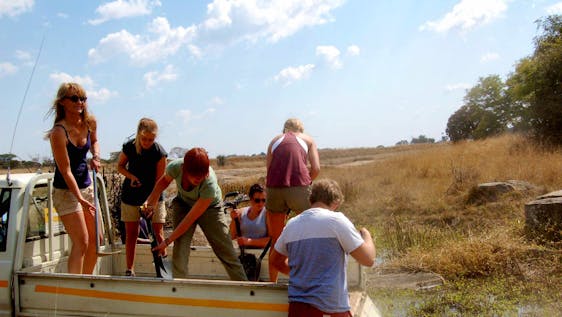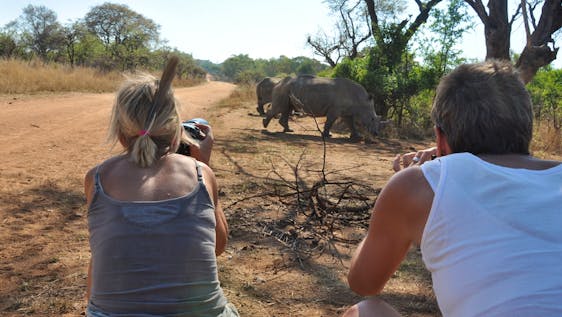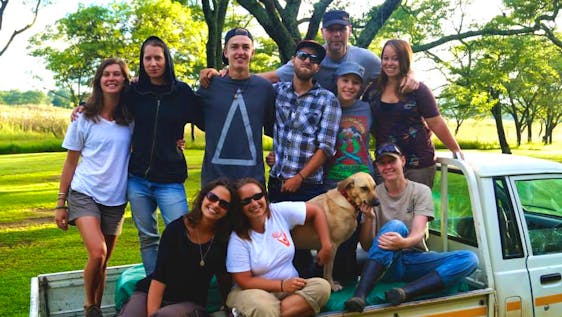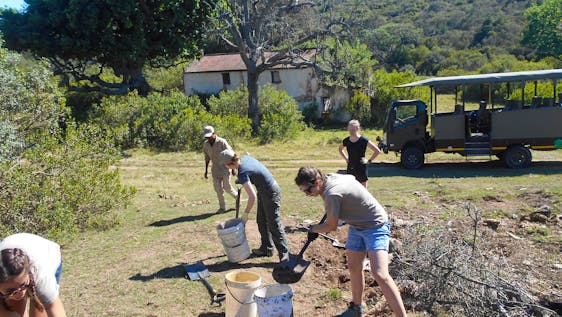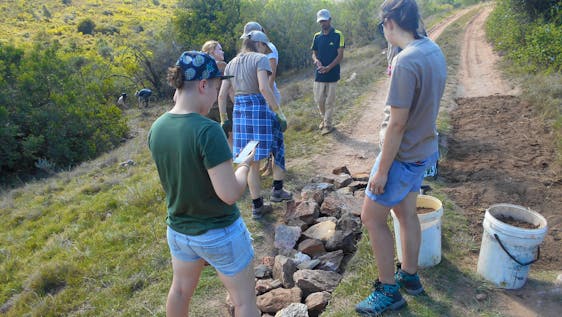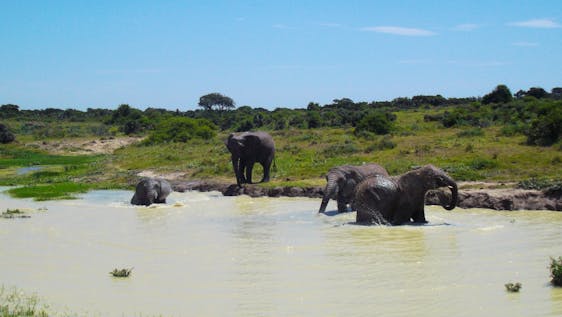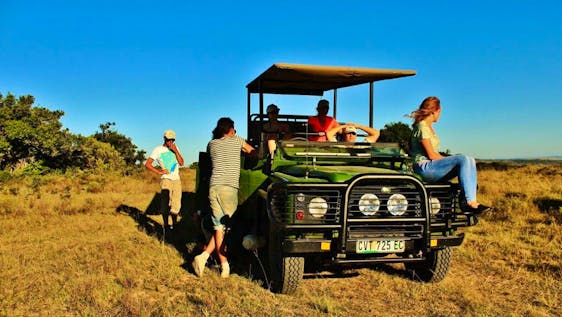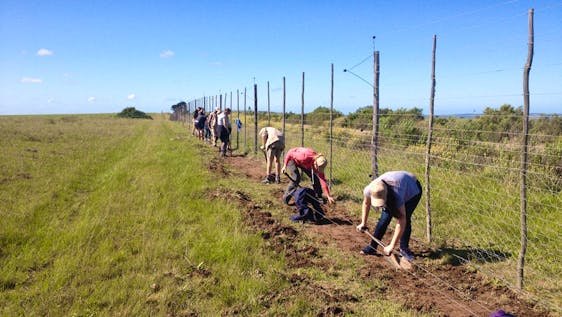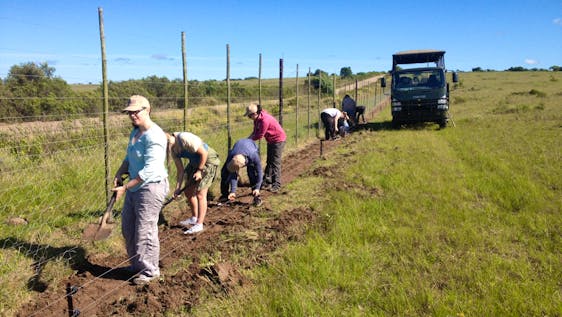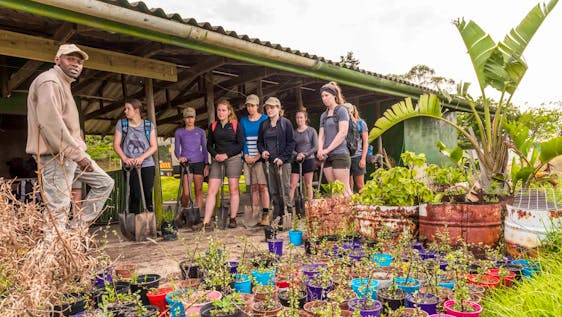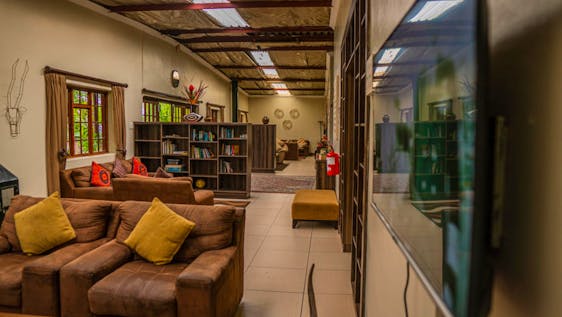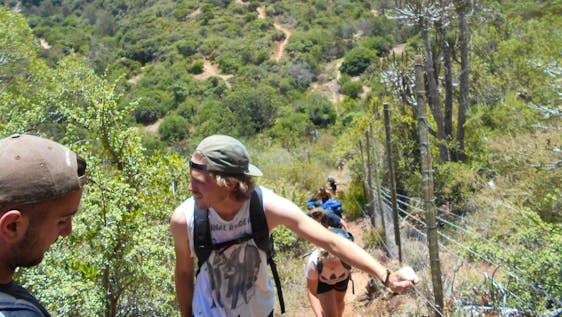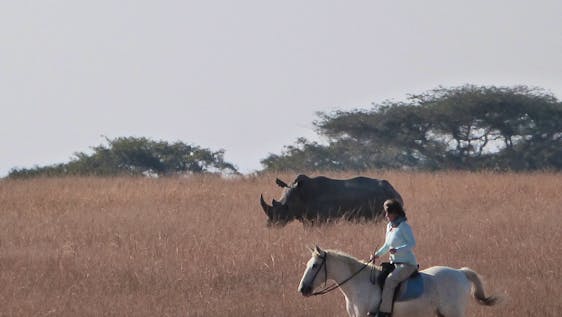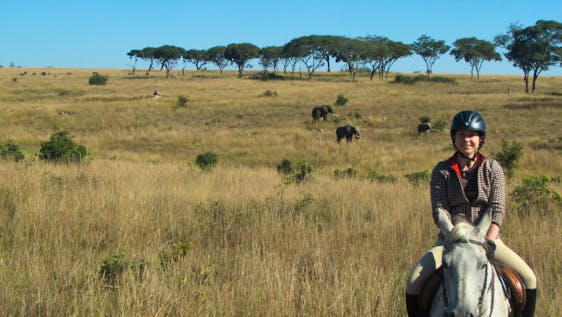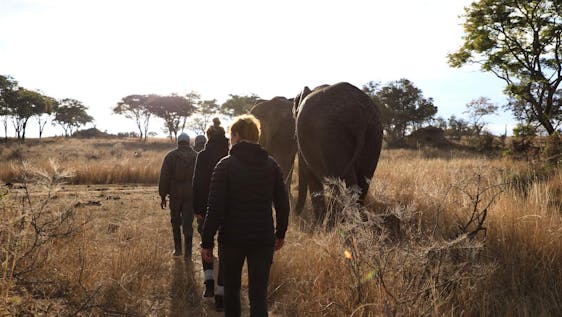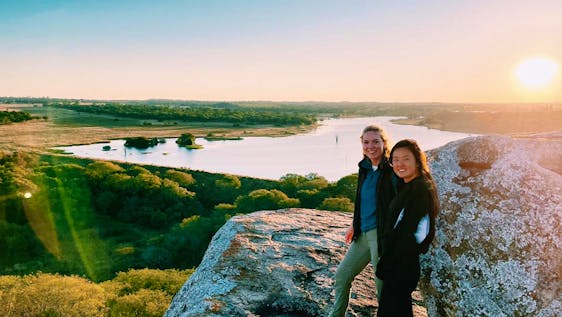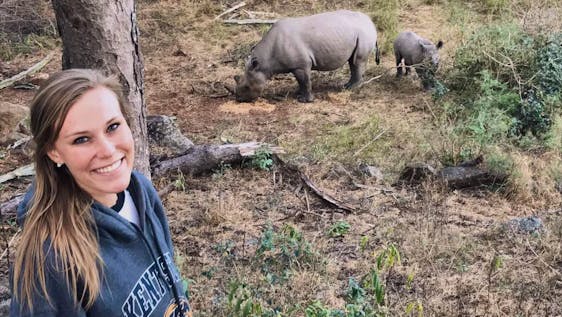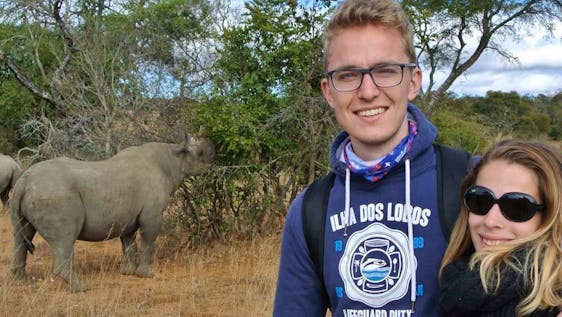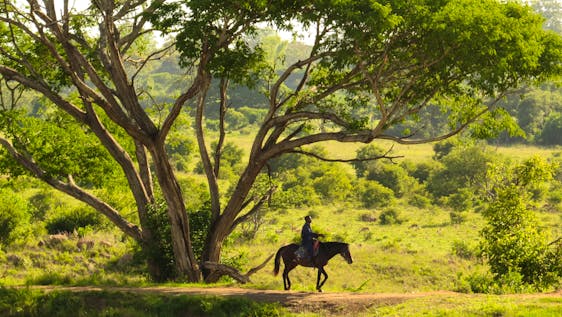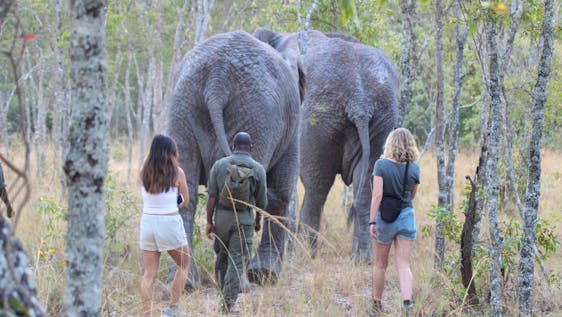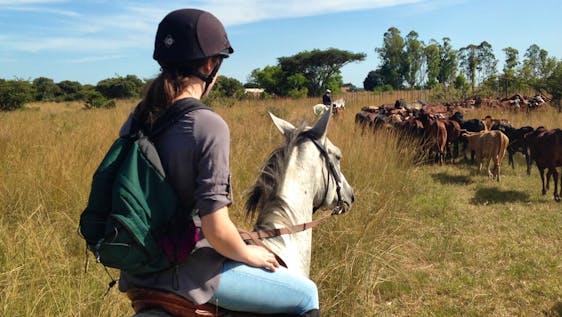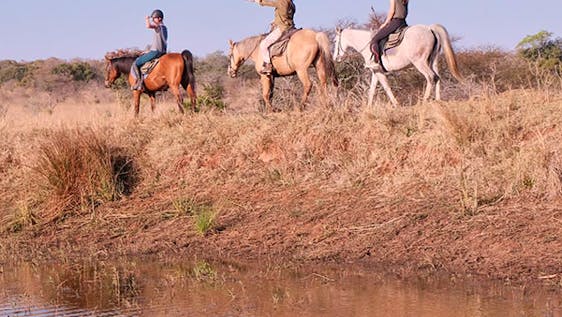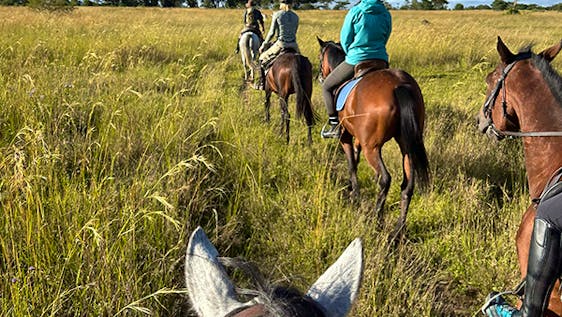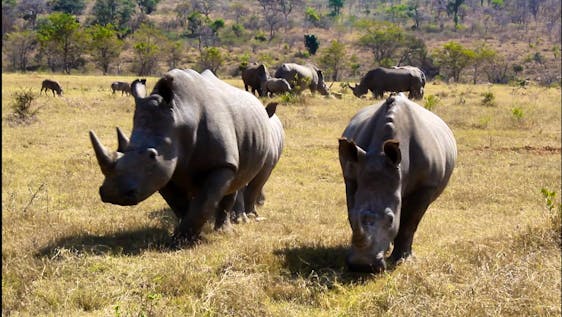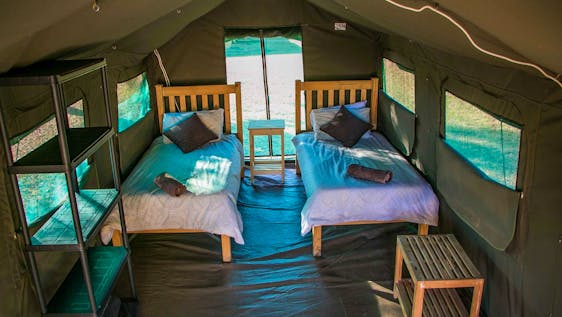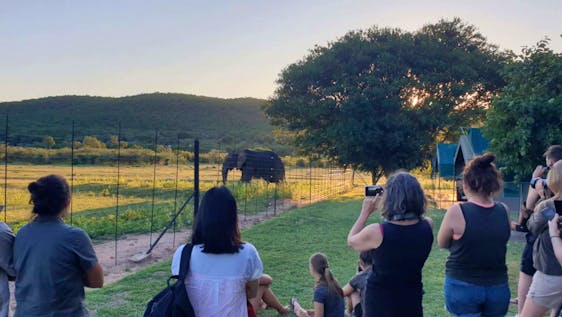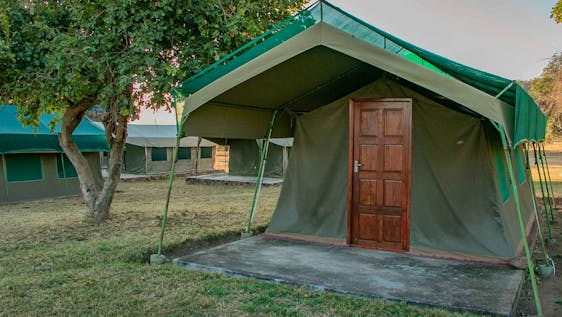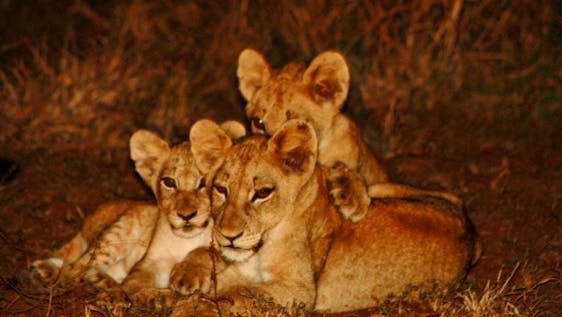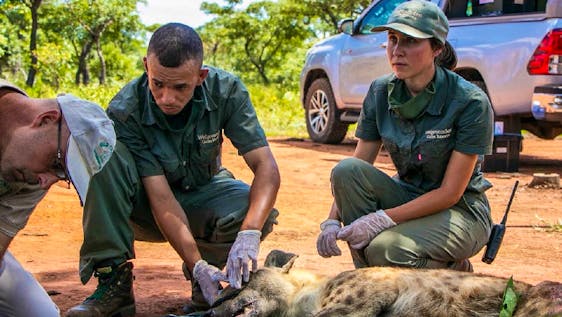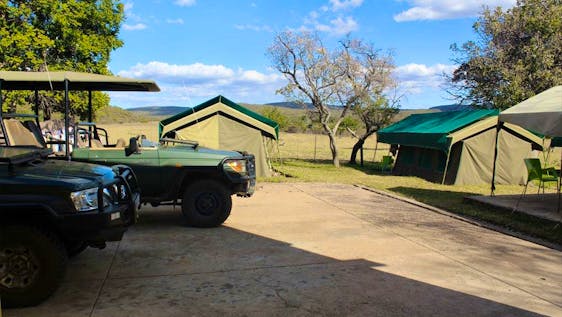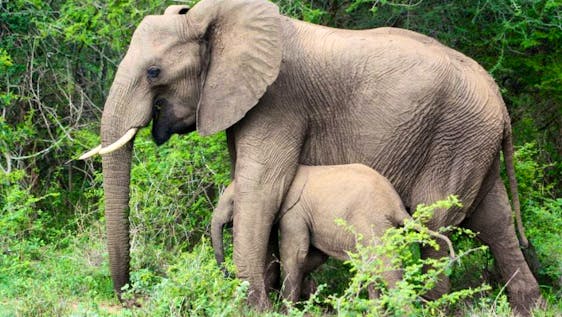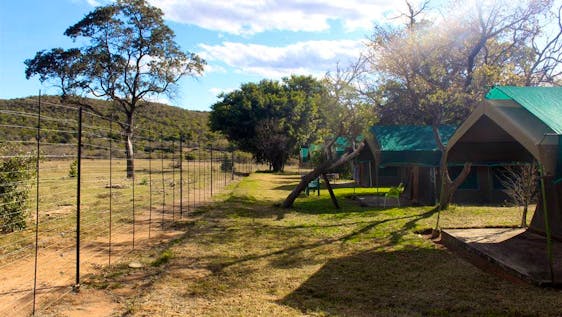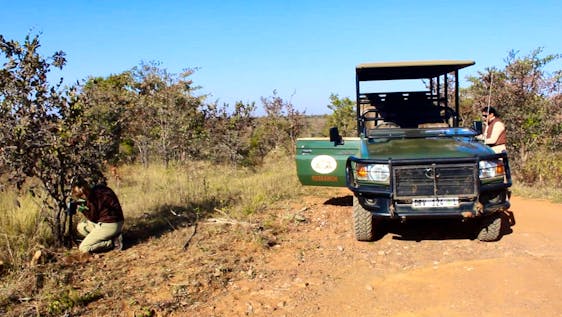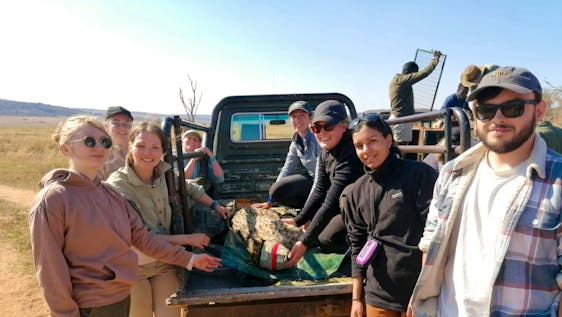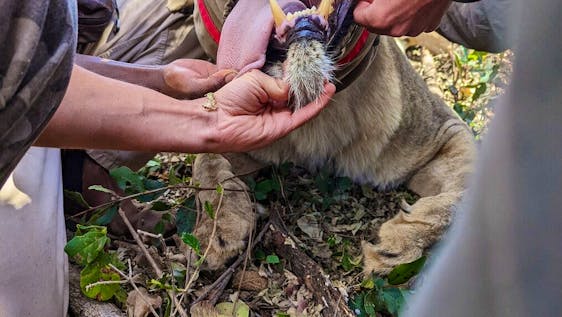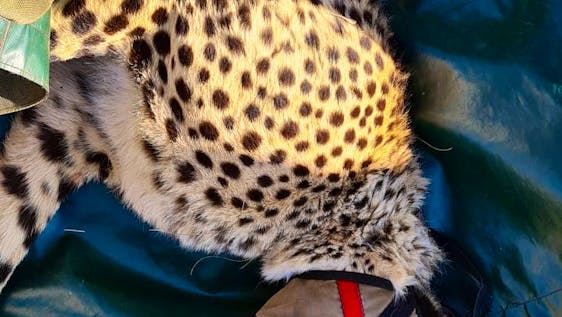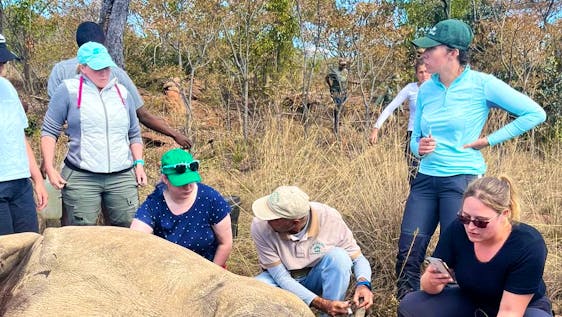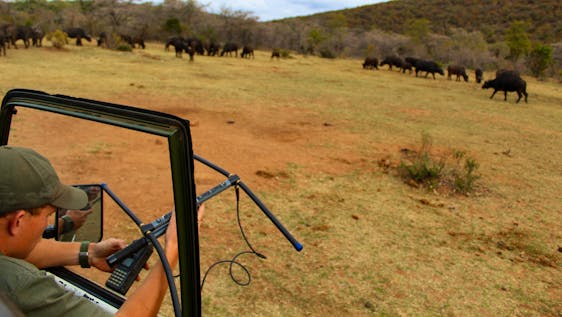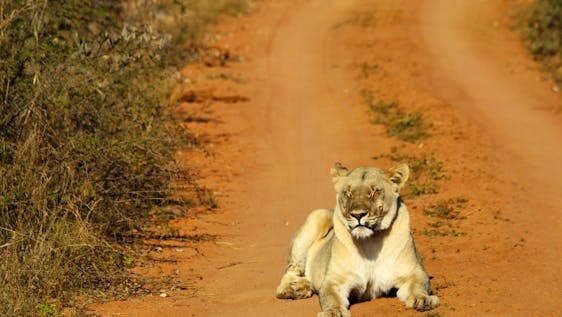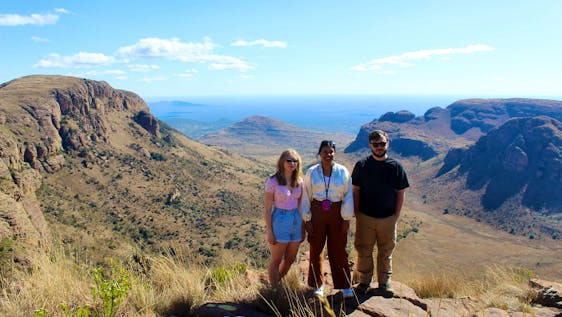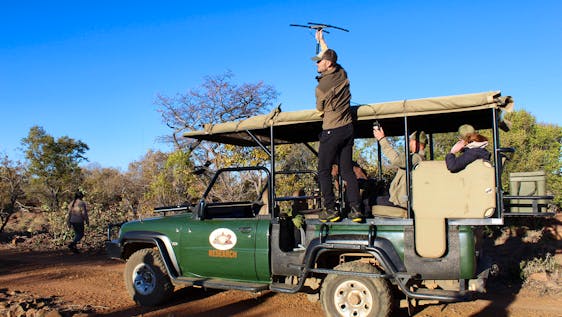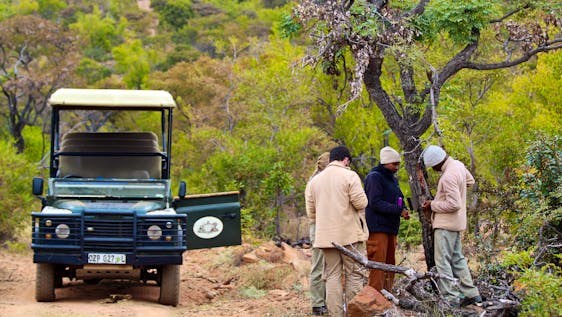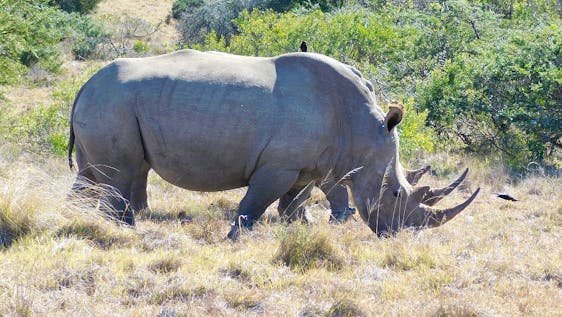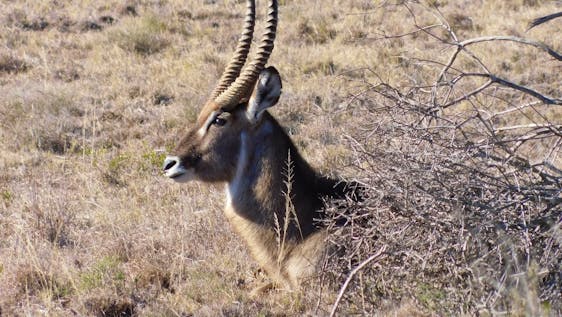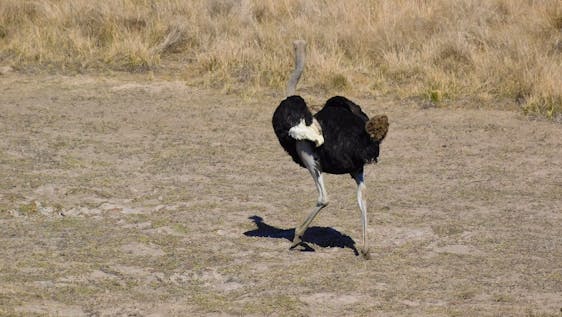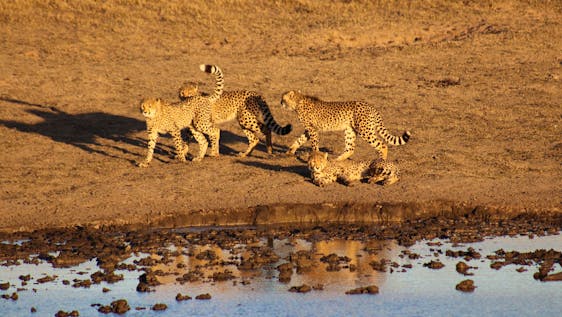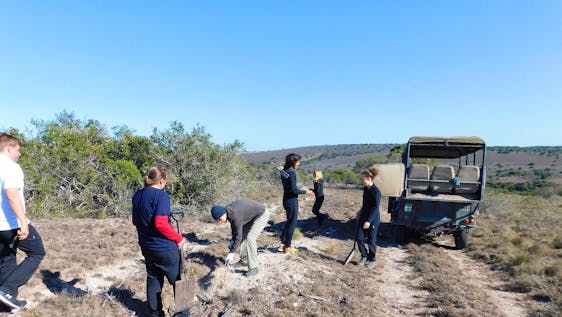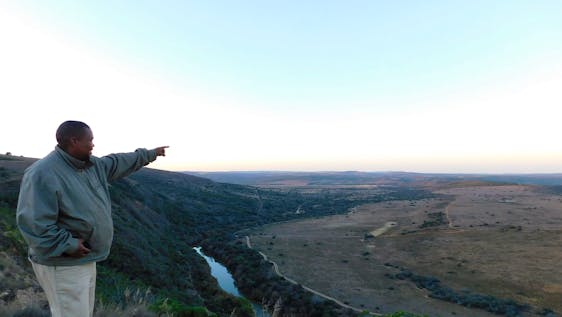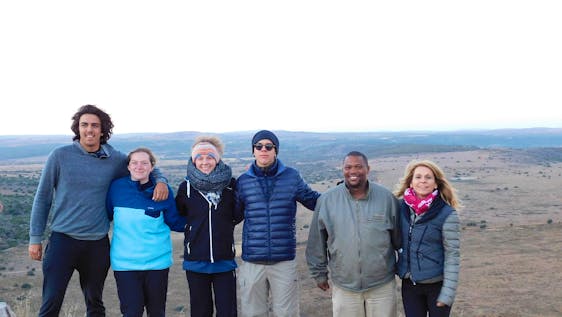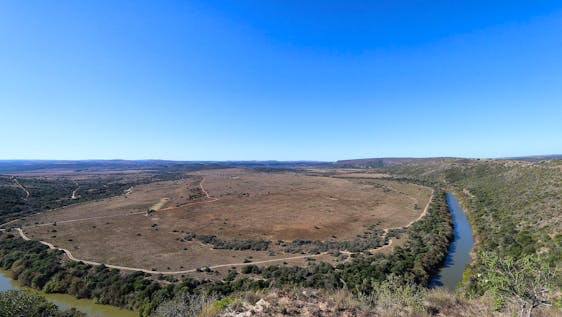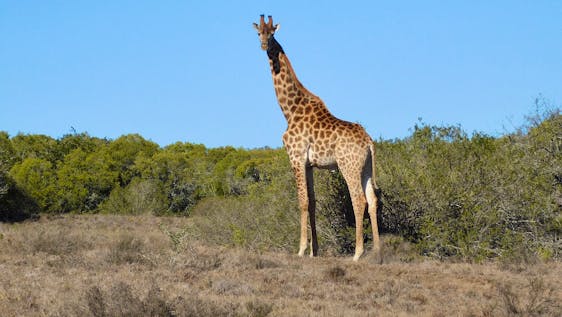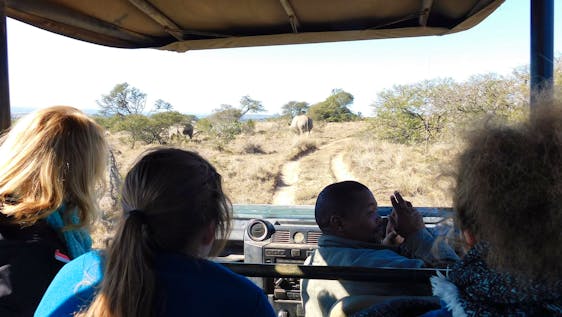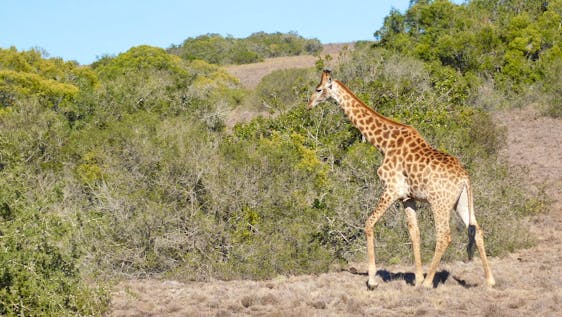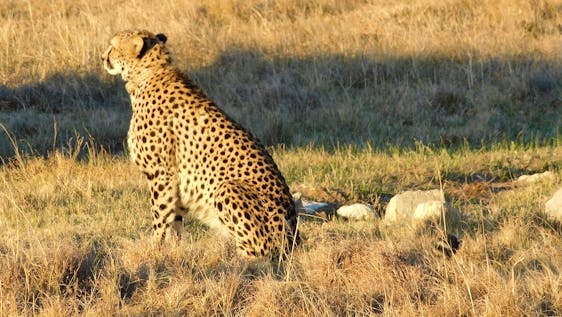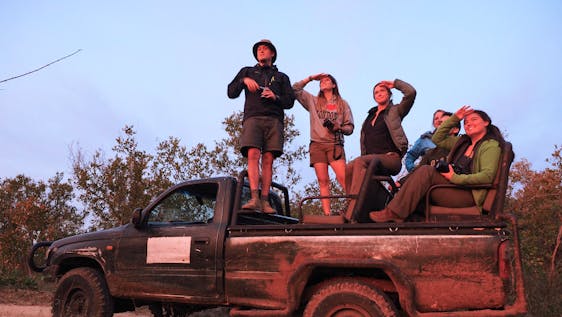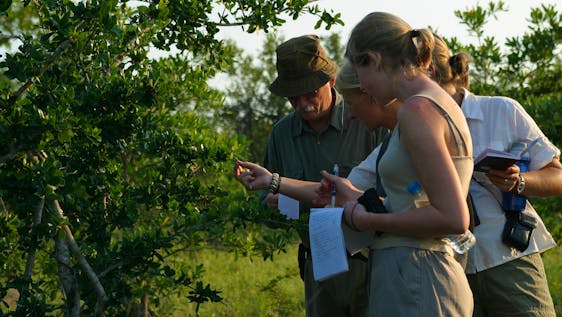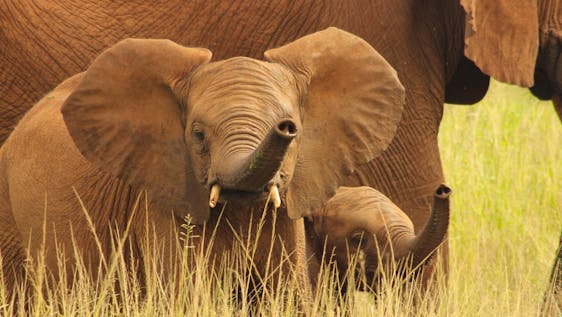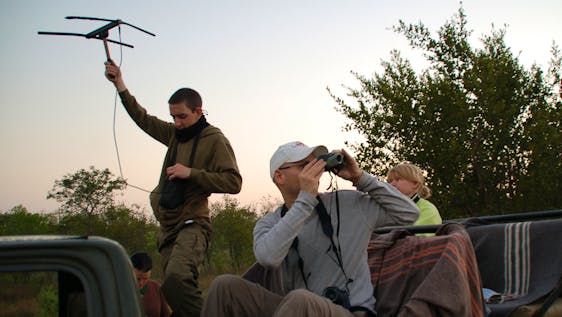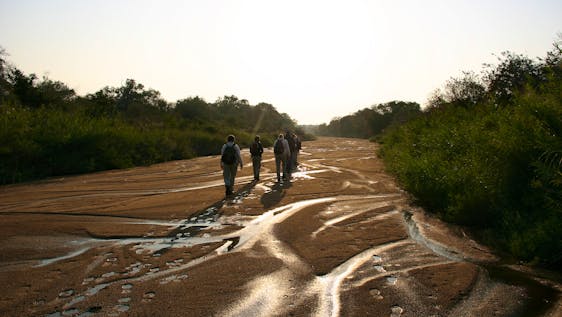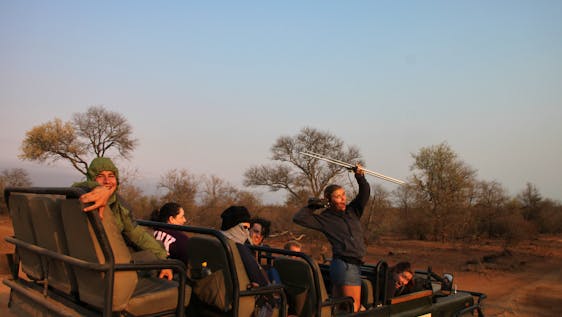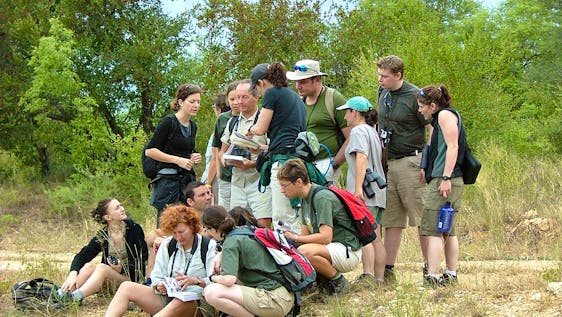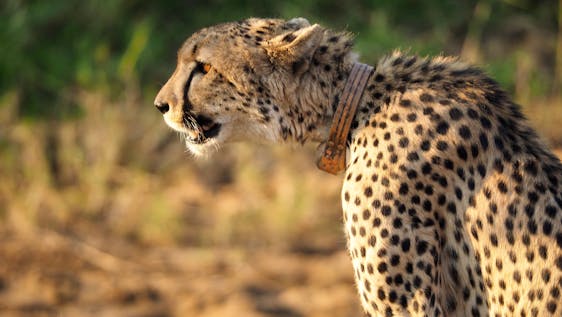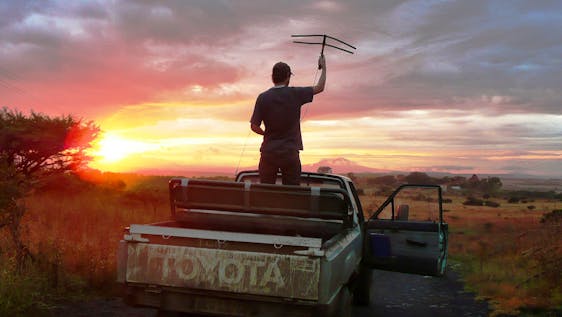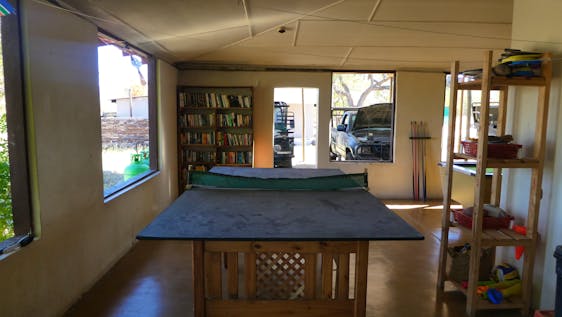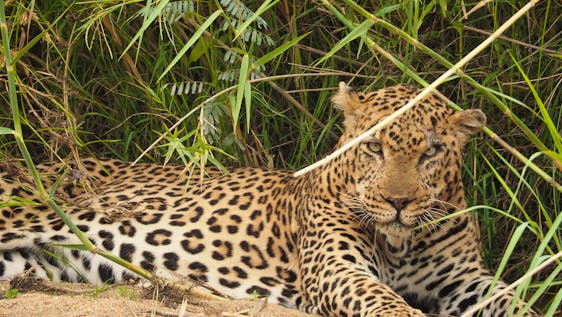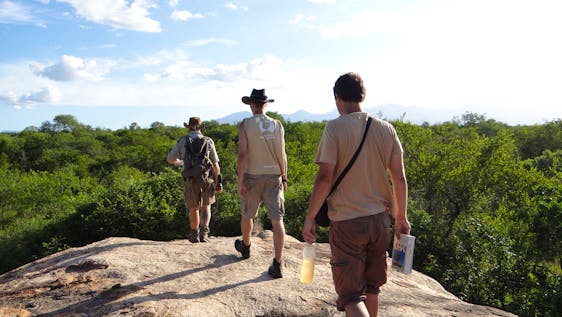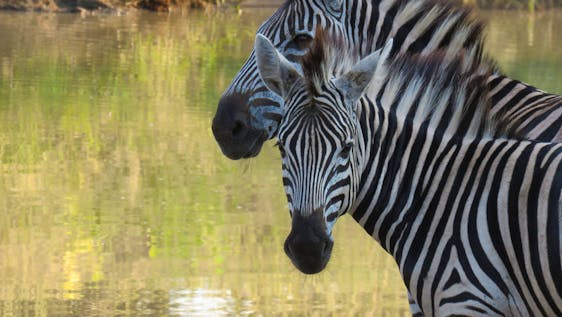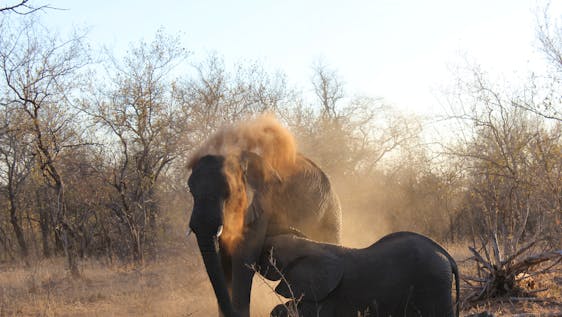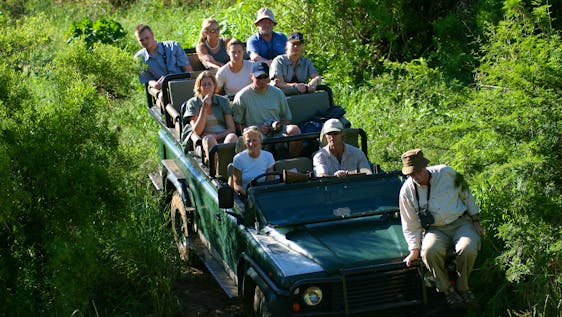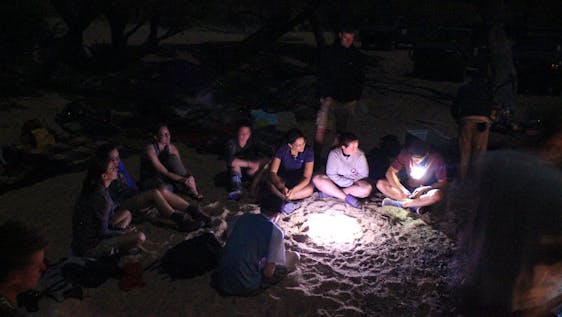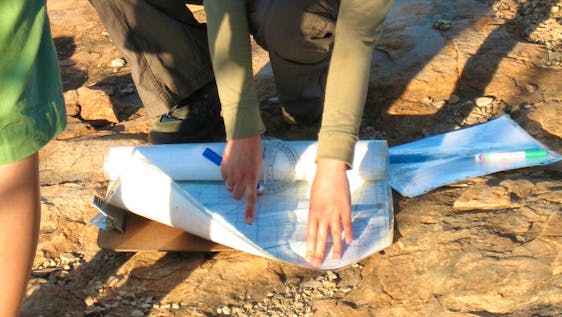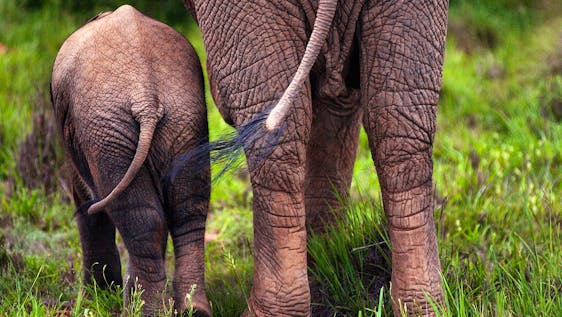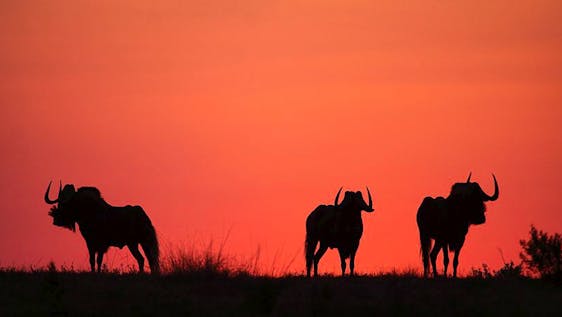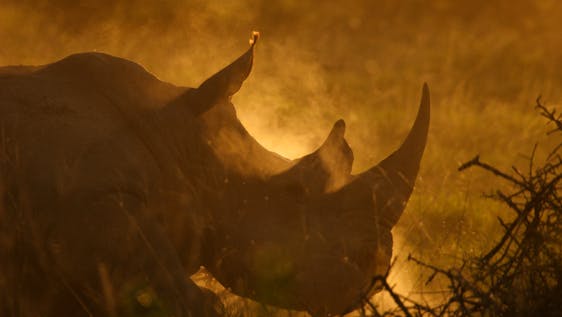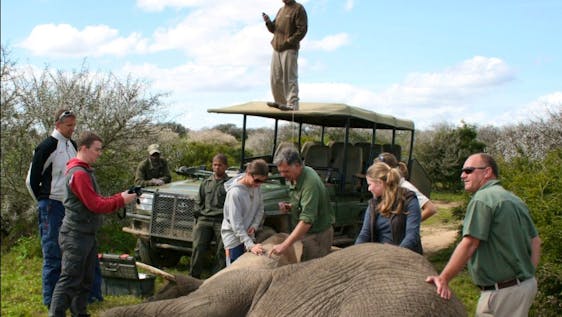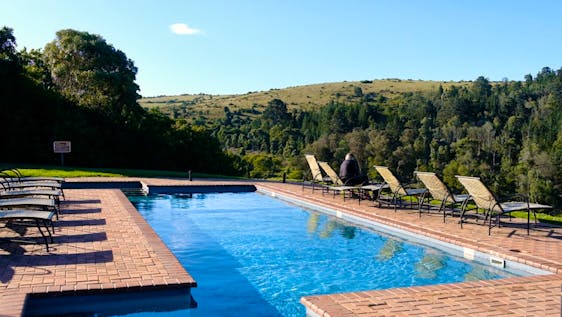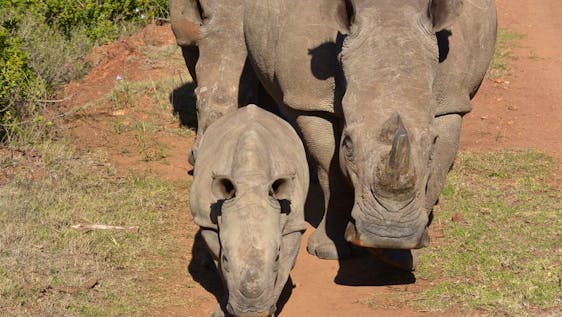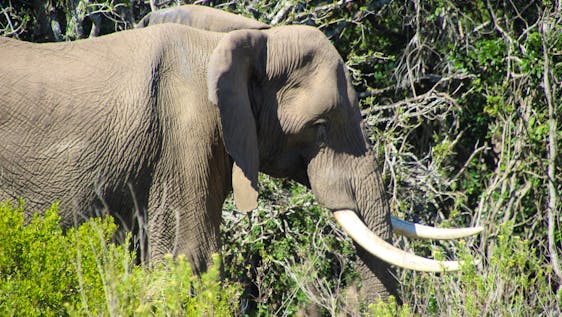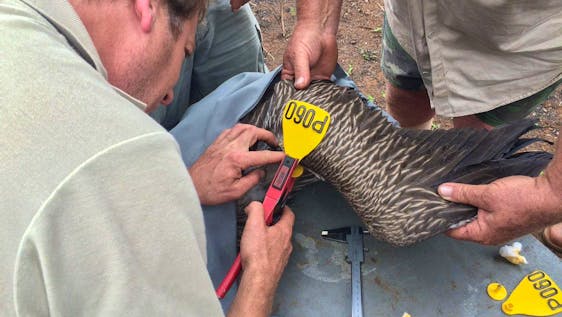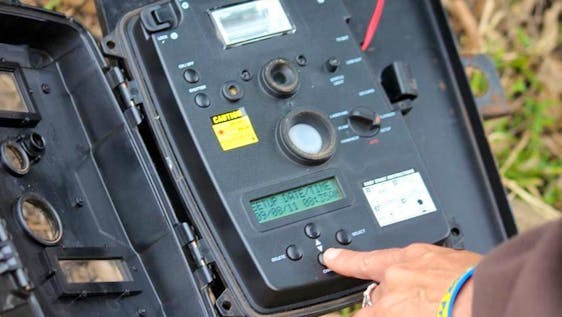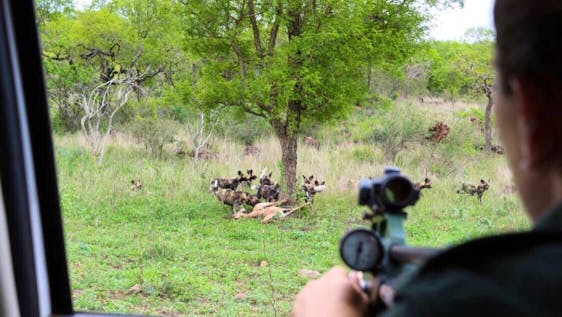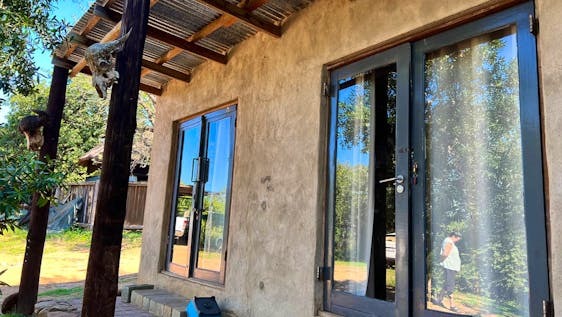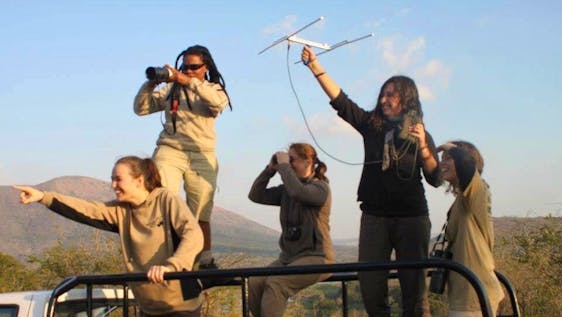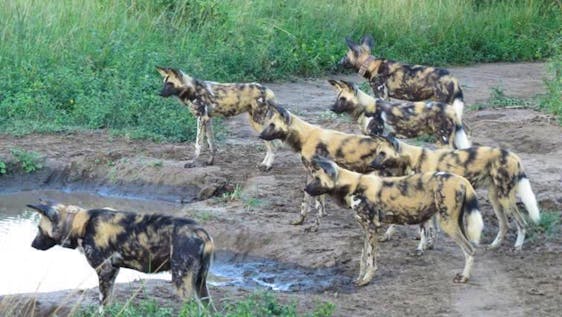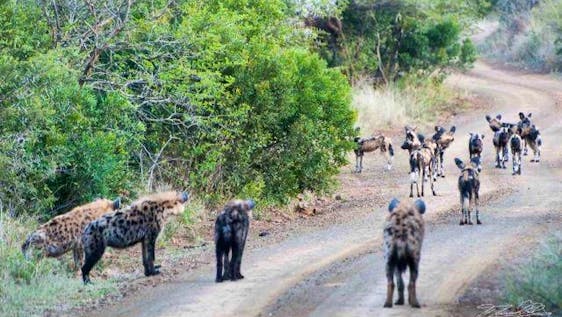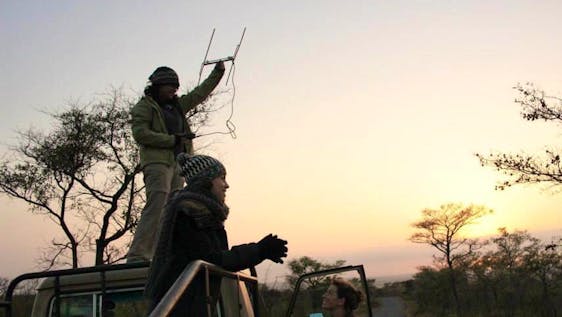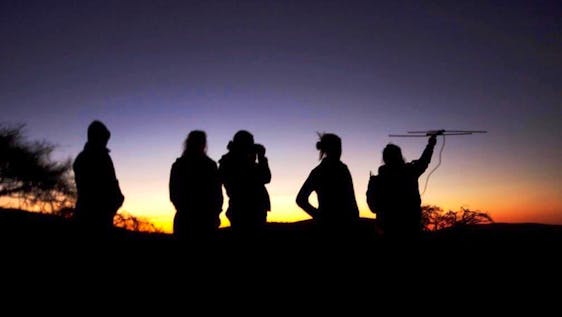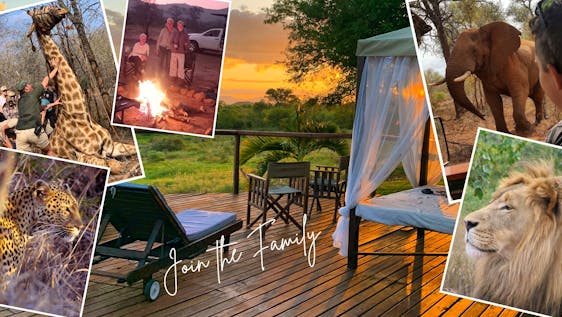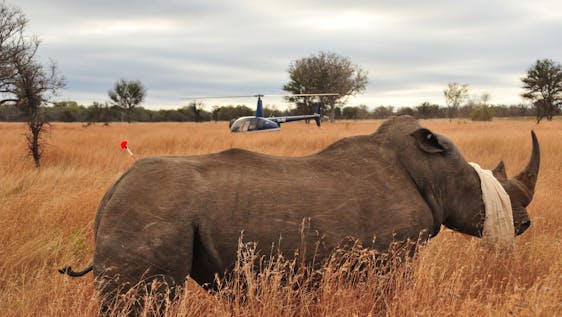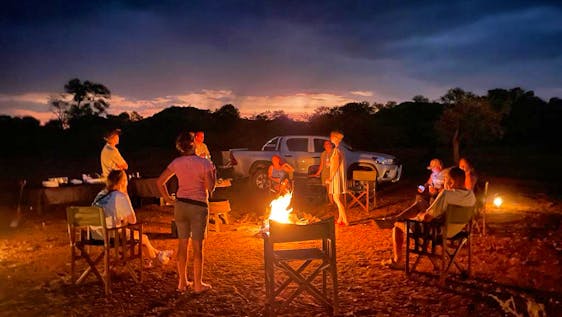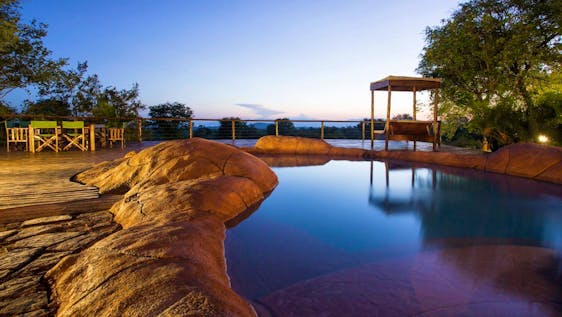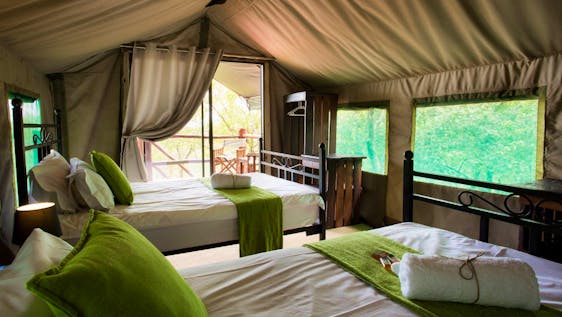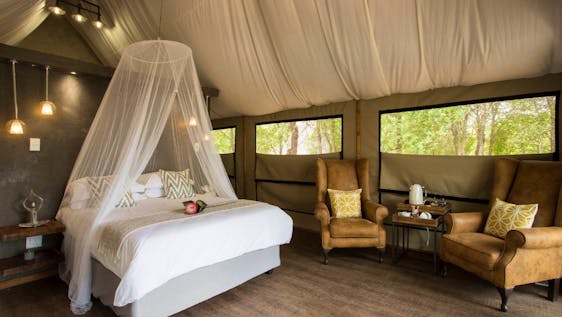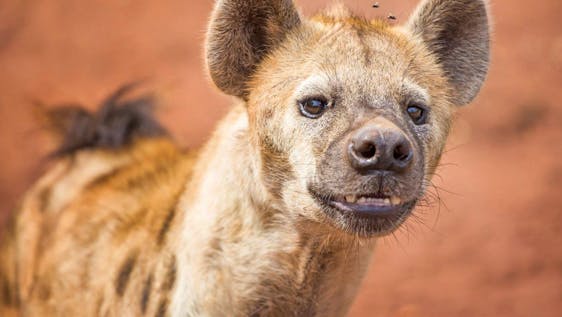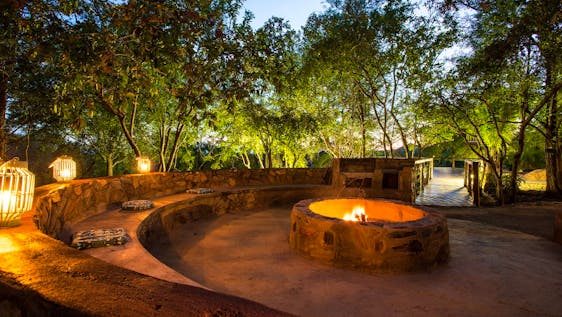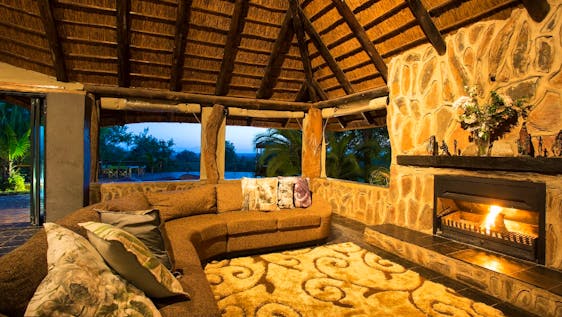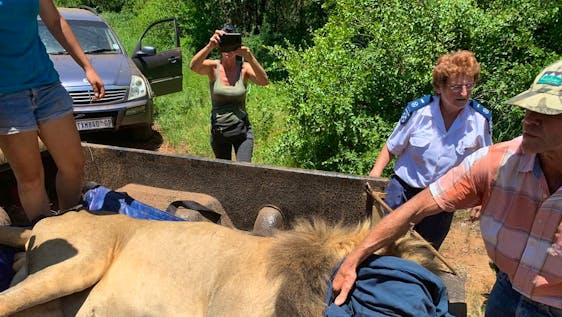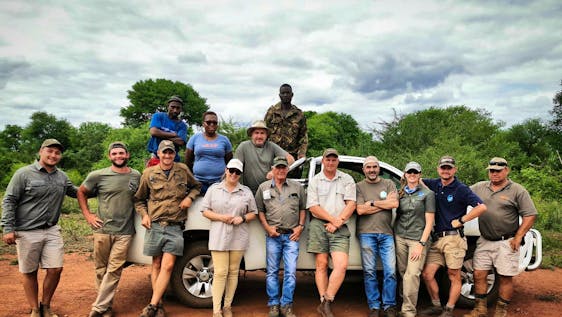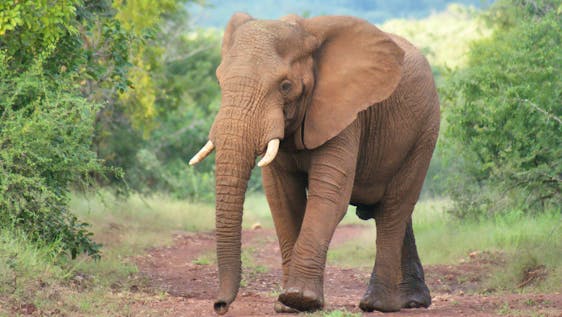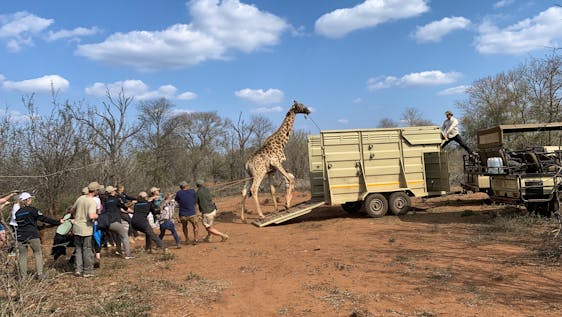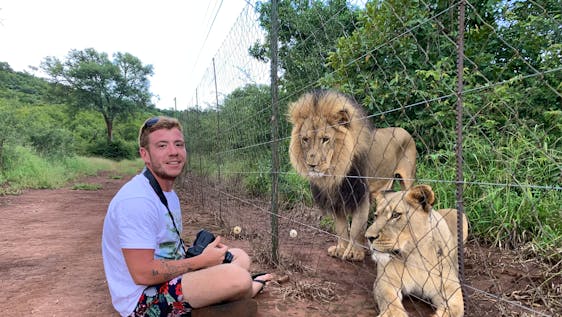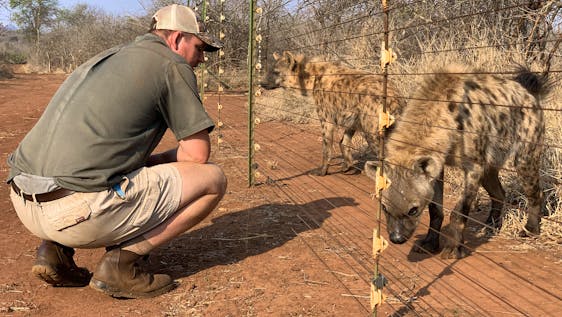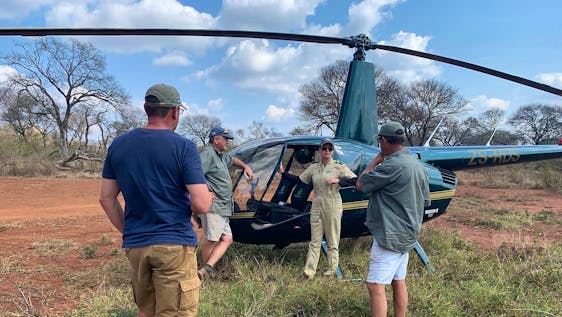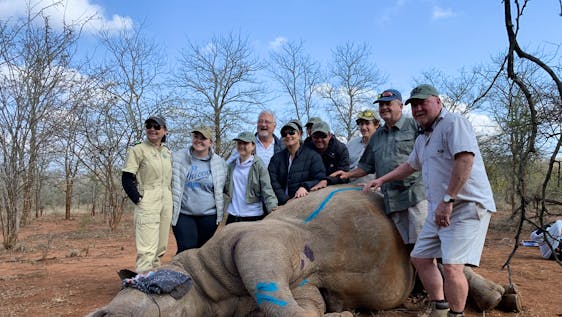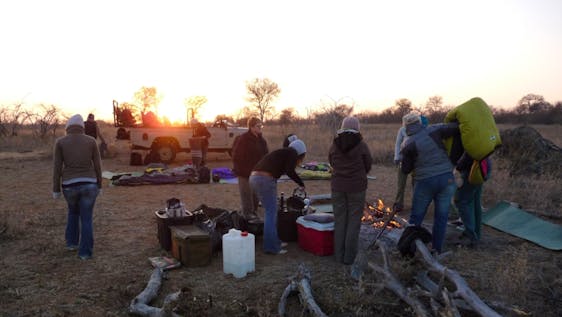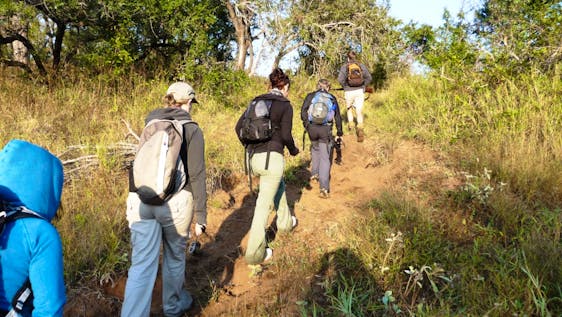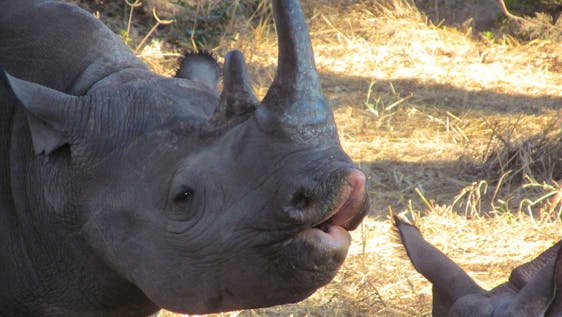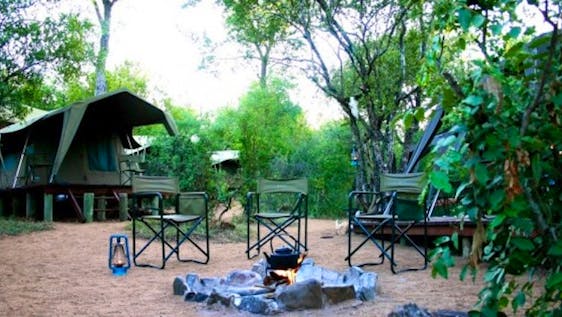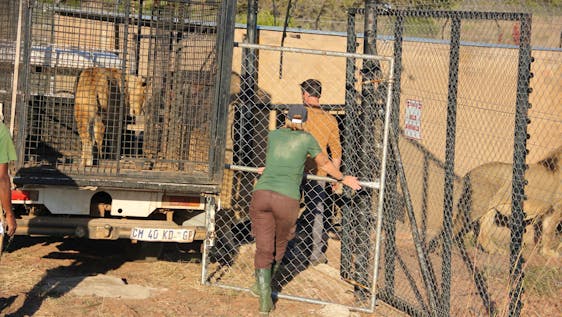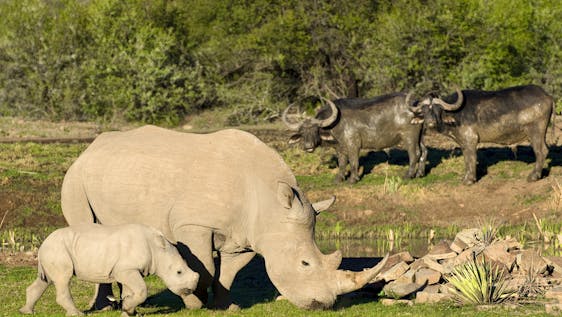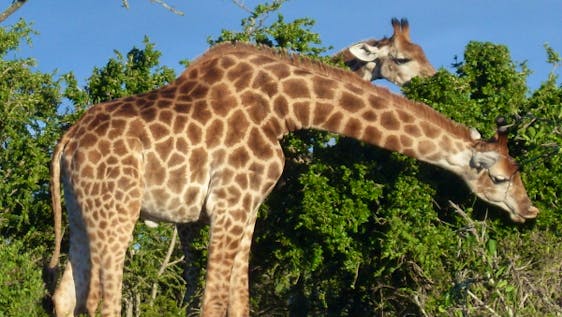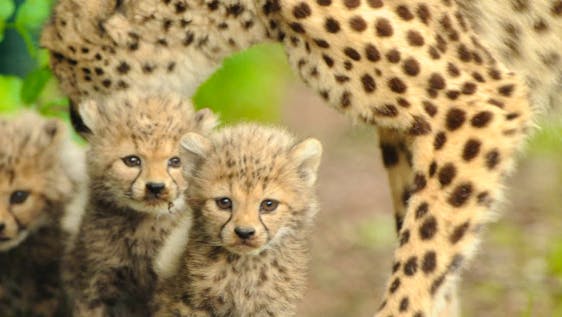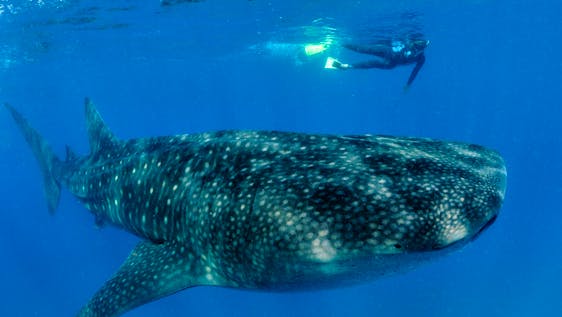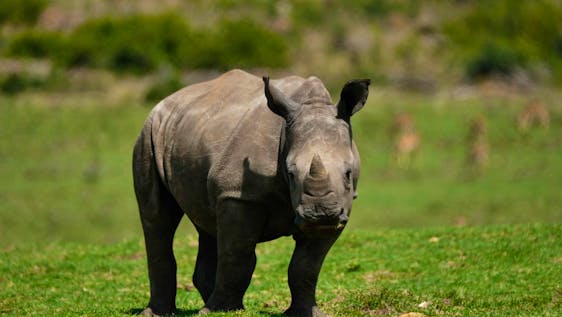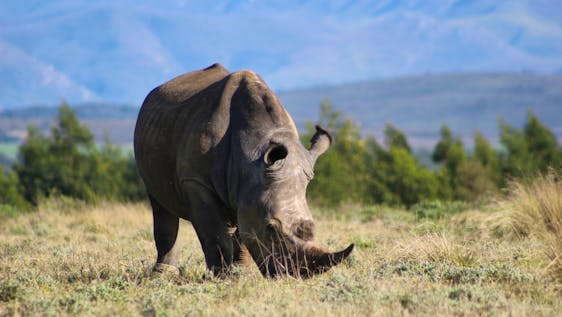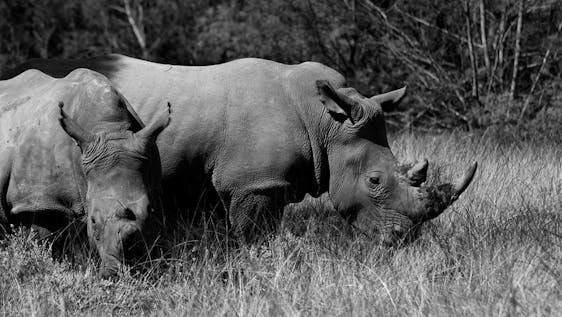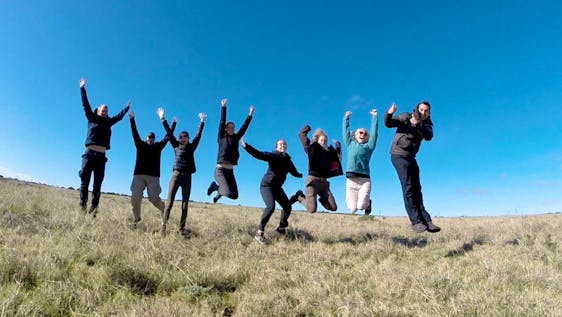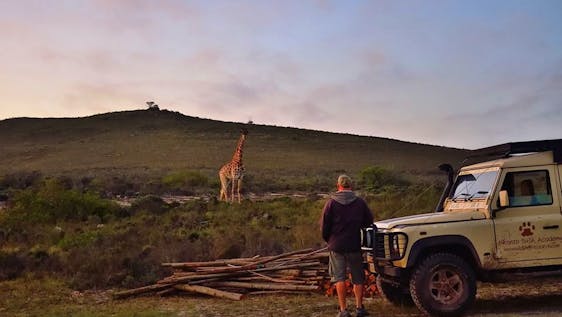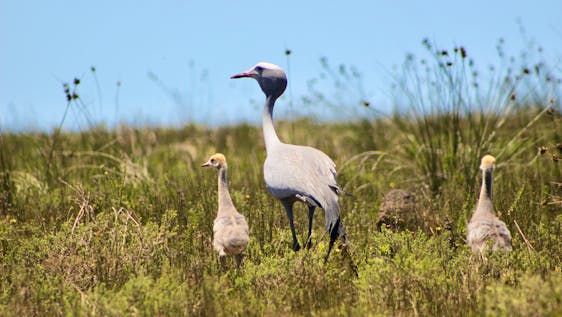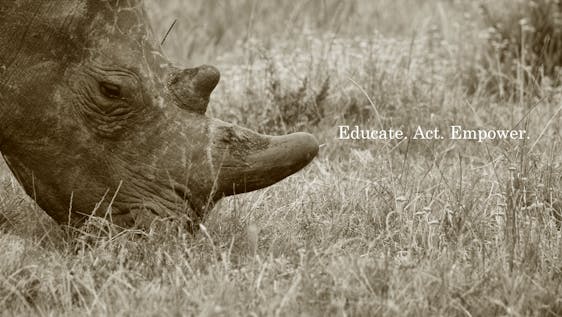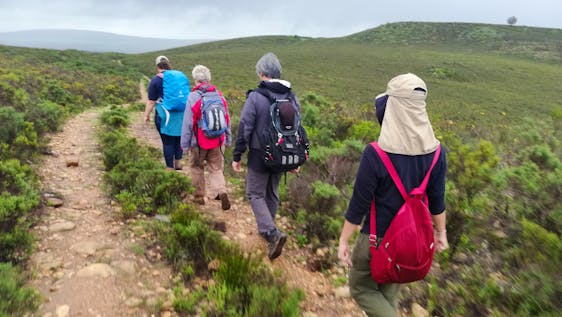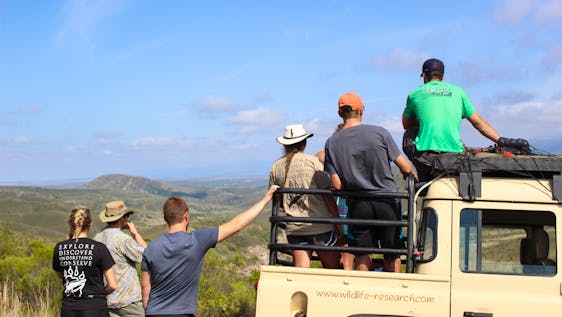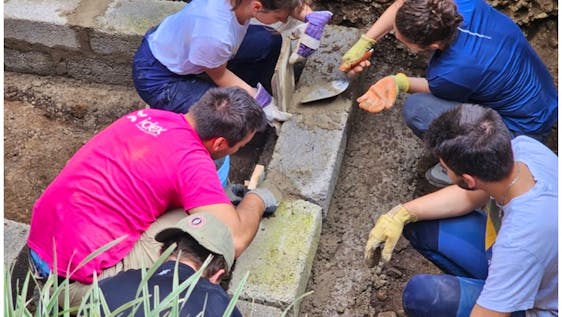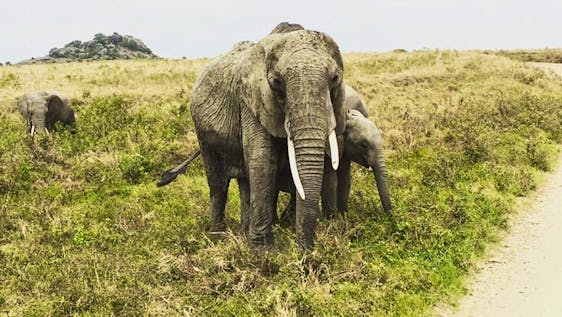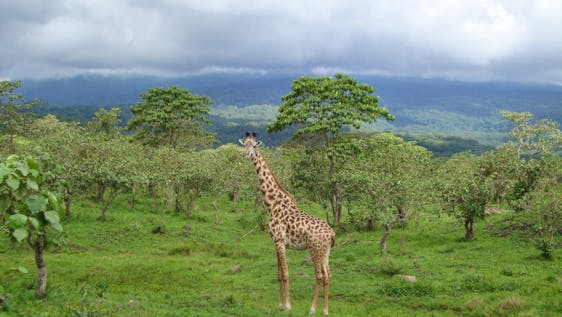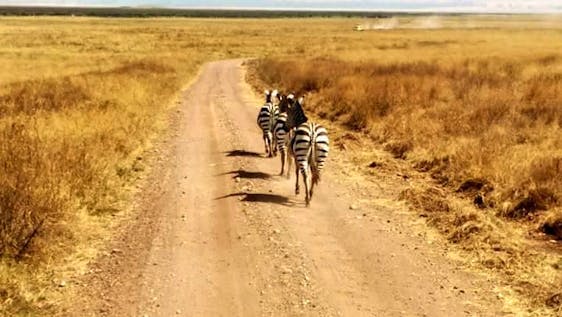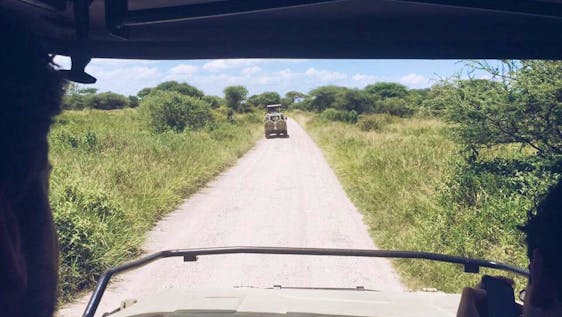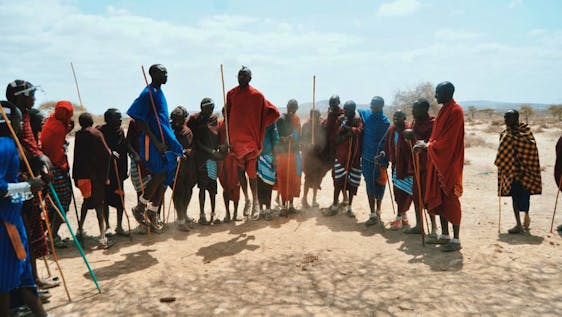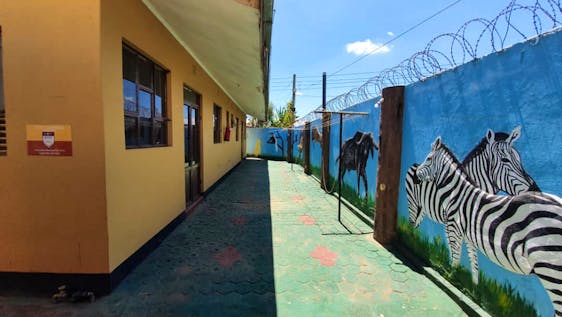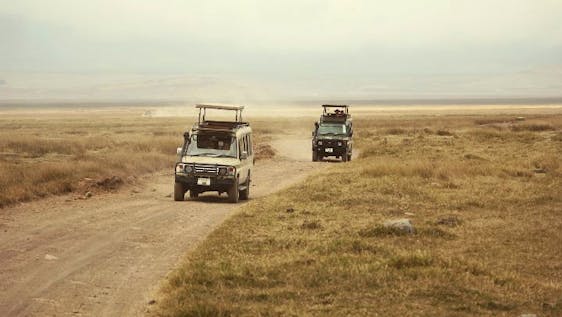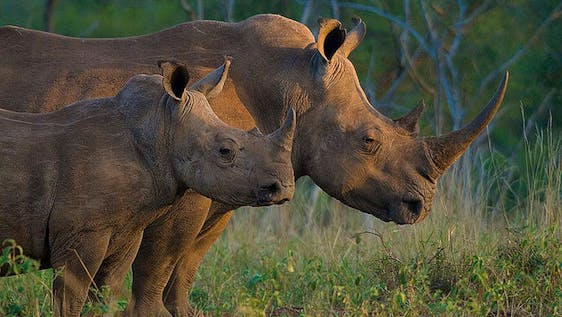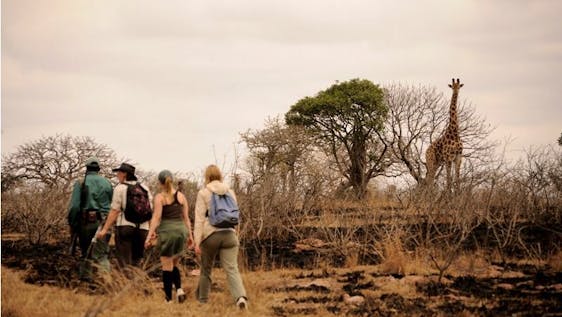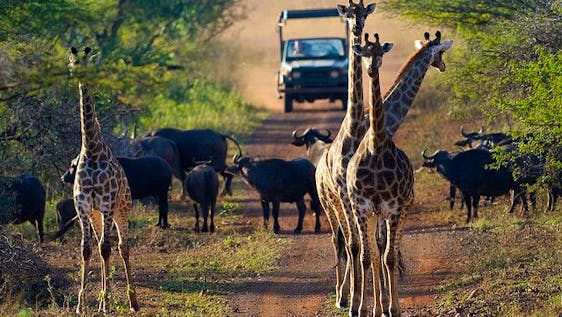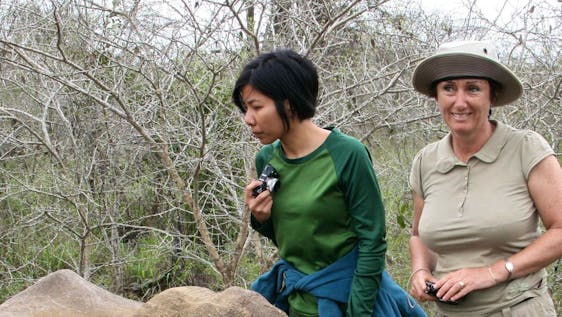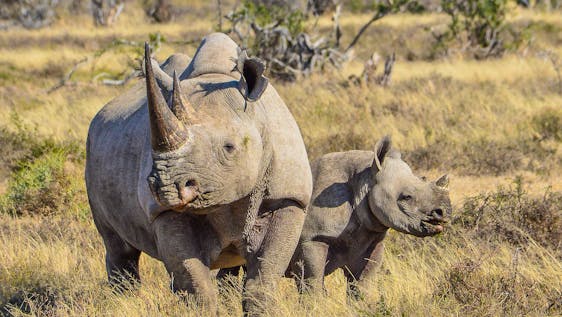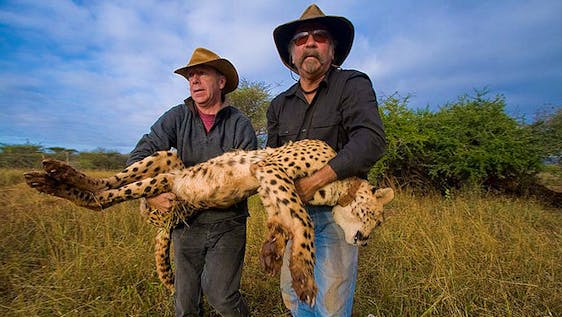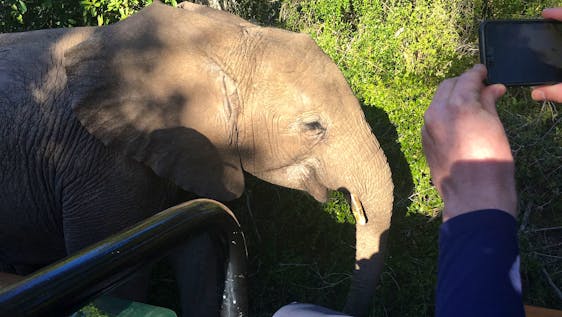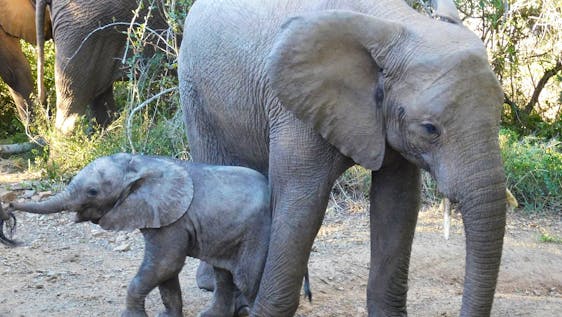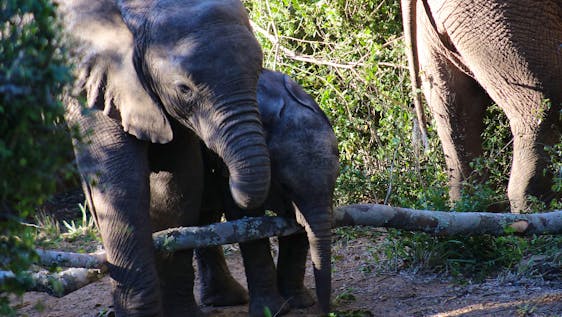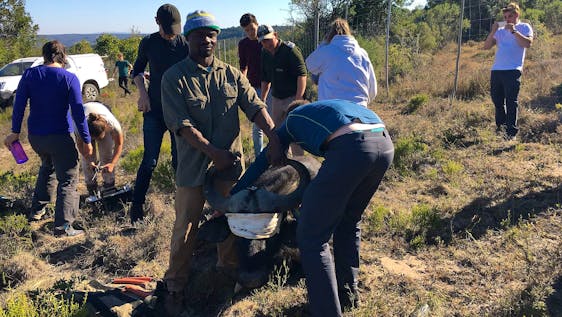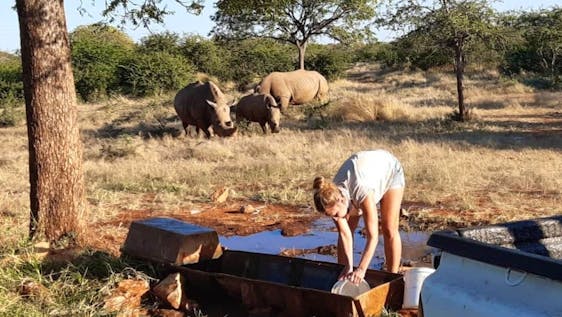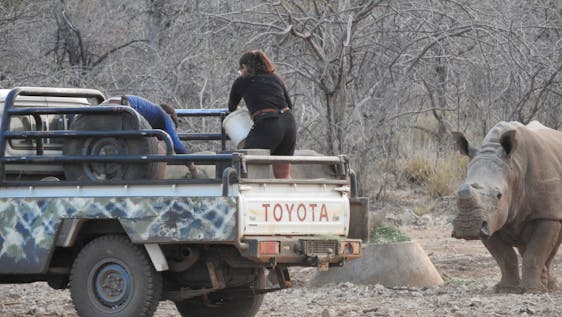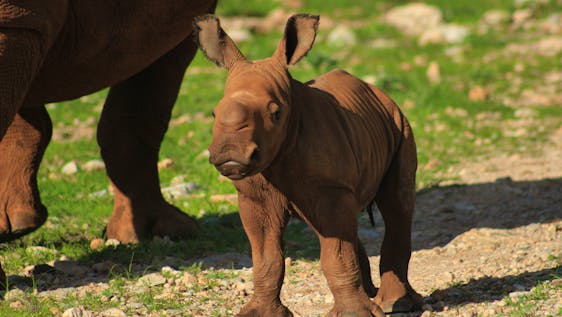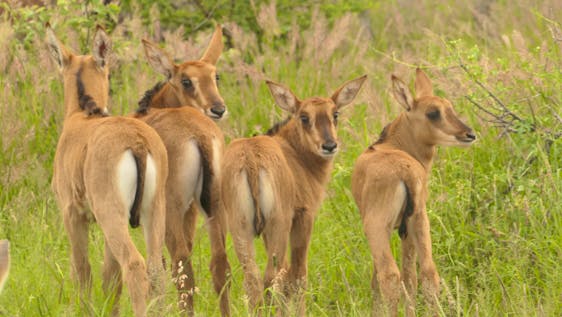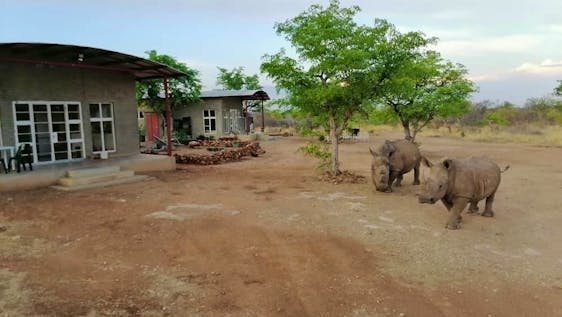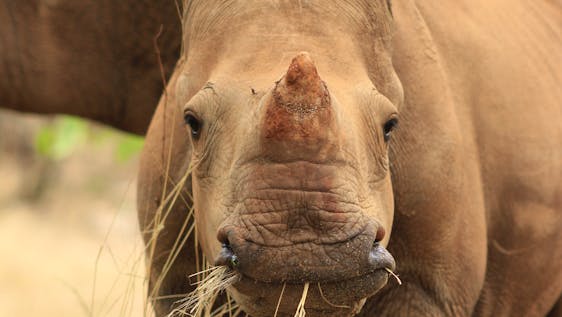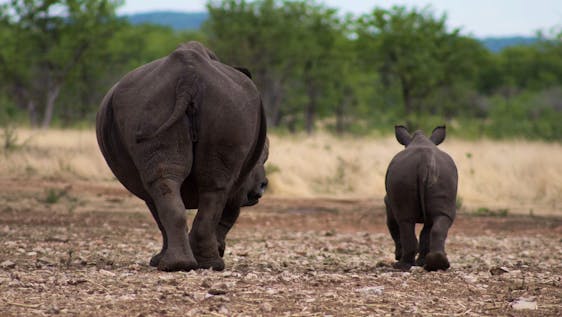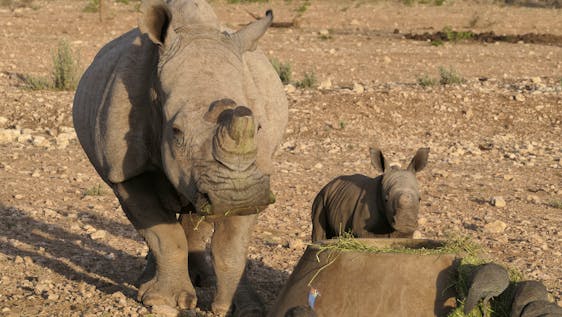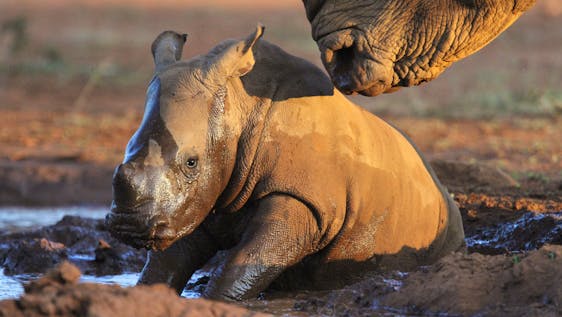Rhino Conservation Volunteer
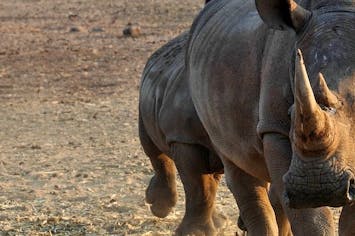
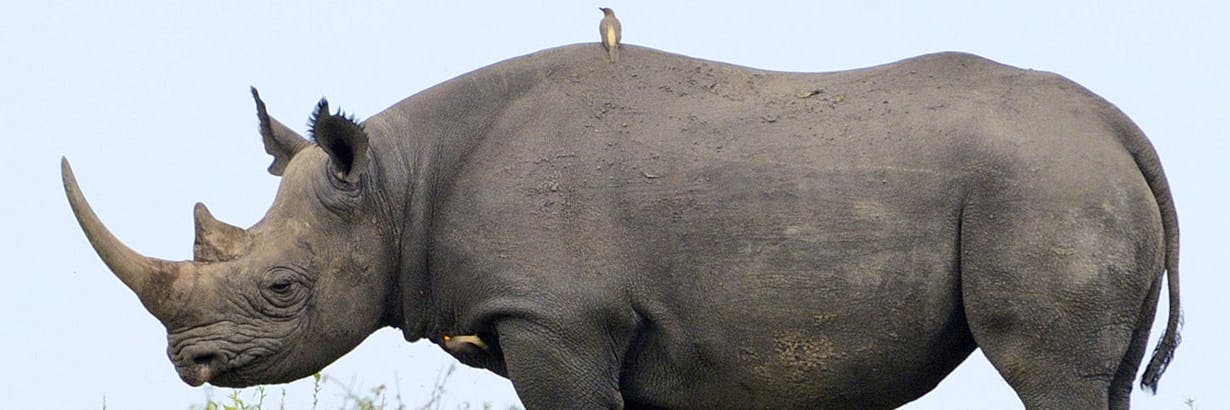
Volunteer at a Rhino Sanctuary
Rhinoceros are some of the largest remaining megafauna, which means that a grown-up individual reaches a weight of over a tonne. Together with their compact bodies and their horns, rhinos make an impressive appearance. They belong to the famous African wildlife that consists of elephants, rhinos, buffalos, lions, and leopards, attracting thousands of tourists each year. A rhinoceros can reach up to 60 years of age in the wild. This is because grown-up rhinos don't have any predators apart from humans.
Rhinos are herbivores and mainly eat grasses, leaves, buds, and fruits. As they don’t have teeth in the front of their mouths, they use their lips to pluck the food. Rhinos have very small brains for their massive body size, considerably smaller than other animals with similar body sizes.
Their most distinctive physical trait is their horns. Some species have one, others have two. Unfortunately, this trademark is also the main reason why rhinos are endangered. They are poached for their horns, which are believed to have a medicinal effect in Asian countries like Vietnam and China. They’re also considered high-value gifts and popular items for rich customers from Asia. Although international trade in rhino horn has been prohibited since 1977 under the Convention on International Trade in Endangered Species of Fauna and Flora (CITES), the demand for rhino horn is on a constant high and affects illegal rhino poaching.
🦏 Rhino Conservation Status 2025
Rhinos used to have a much larger range than they do today. They were once found all over Europe, Asia and Africa. Around 100 years ago, more than half a million rhinoceros roamed Asia and Africa after their European relatives had already disappeared. Today, there are roughly 25.000 rhinos left in Africa, with some subspecies already extinct. In Asia, the situation is even more dramatic. It is estimated that little over 3500 individuals are left in all of Asia and Vietnam has announced back in 2011 that there are no rhinos left in the country.
🦏 Why are Rhinos Endangered?
Grown rhinos do not have any natural predators, except humans. The sad truth is that the critical situation of the rhinoceroses’ populations is 100% man-made. The main reason that rhinoceros are endangered is the poaching for their horns. In many Asian countries, it is still believed that rhino horn is a cure for cancer and can also be used as an aphrodisiac.
This is based on Traditional Chinese Medicine (TCM) and even though many TCM educators speak out against using rhino horn for medical reasons, many people still believe in its healing powers. In fact, rhino horn consists of keratin, the same protein that hair and fingernails are made of, so it is scientifically proven that there is no healing effect whatsoever.
Still, the demand for rhino horn is very high. On the international black market, rhino horn costs the same per weight as gold. It's not surprising that illegal poaching continues in Asia and Africa and gets harder and harder to control.
Today, most rhinos can only survive in national parks and protected areas, in a rhinoceros sanctuary, or a conservation project. And although the overall situation of rhino populations is very critical, there have been successful conservation efforts in the past decades. White rhinos, for example, were thought to be extinct in the late 19th century, but after a wild group of about 100 individuals was discovered and heavily protected, the population grew constantly.
Today, there are around 20.000 white rhinos in protected areas and private game reserves and they are the only rhino species that is not endangered but “only” threatened. The population of Indian rhinos is also growing very slowly, from about 1800 in the early ’90s to 3500 in 2015, which still leaves them at a vulnerable status.
🦏 What are the Different Rhino Species?
There are five species of rhinoceros that still exist today, two in Africa and three in Asia. The main difference between the two species is that African rhinos are bigger and have two horns, while their Asian relatives are considerably smaller and only have one horn. The only exception to this rule is the Sumatran rhino, which also has two horns.
White rhinos are the second-largest land mammal, only topped by elephants, and they mainly occur in South Africa, Namibia, Zimbabwe, and Kenya. Their name is quite misleading because white rhinos are actually grey and the same color as their relatives, the black rhinos. Their name comes from the Afrikaans word “weit”, which means “wide” and refers to their mouths.
The black rhino is smaller in size and weight and their mouth also looks very different from the square mouth of the white rhino. The black rhino is critically endangered with only about 5000 individuals left, mainly in South Africa, Kenya and Namibia.
Indian rhinos are almost as large as the African white rhino and once inhabited a territory ranging from Pakistan to China. Today, they can only be found in protected areas in India and Nepal, with a few individuals living in Pakistan.
The Javan rhinoceros is one of the most endangered mammals on earth, with only about 60 individuals remaining on the island of Java. They used to range from Nepal to Sumatra, with the last rhino living outside of Java being killed in 2011 in Vietnam by poachers.
The Sumatran rhino is the only Asian rhinoceros that has two horns like its African relatives. It is the smallest of all rhino species and has more hair than the others. It can be found today in very high regions in Sumatra and Borneo and is facing threats like poaching and habitat loss from palm oil production. This is why this species is also considered critically endangered.
To sum things up, here is a list of all the rhino species that still exist today:
- Black Rhino
- Indian Rhino
- Javan Rhino
- Sumatran Rhino
- White Rhino
🌍 Best Places to Volunteer with Rhinos
While rhinoceros can be found in both Asia and Africa, rhino volunteer projects will lead you to Africa for a very simple reason. The number of Asian rhinos is alarmingly small which has led to NGOs working hand in hand with governments on population management programs. These places are reserved for professional biologists and experts in conservation work.
Because the African rhino population is much larger, there are many NGOs working on rhino or wildlife conservation projects. There is little to no support from governments which means that these projects depend on the help of rhino conservation volunteers. Join a rhino project and save endangered rhinos in South Africa where a high percentage of white rhino population live. Other great places for working with rhinos are Namibia, Zimbabwe, and Tanzania.
🤔 How can I Help Save Rhinos?
The kind of work that you will be doing during your rhino conservation trip depends on the project that you sign up for. You can find detailed information about the tasks in each program on the program pages. You can also contact the program coordinator for additional questions. We will give you an overview of all the different tasks you can expect when you join a rhino conservation project.
🤸🏽♀️ Where do i fit in saving rhinos?
Depending on which rhino protection project you will join, there will be different tasks. If you are working for a project that focuses on research and observing wild rhino populations, your main tasks will be to observe the individuals and collect data on their behavior. Volunteers and researchers usually live at a base camp and conduct game drives and foot walks to observe the rhinos.
Sometimes you will camp out in the wild or be stationed at a hide near a waterhole where you get to see all kinds of other wildlife. Of course, it is necessary that all rhino volunteers are well prepared for these tasks. There will be lessons and presentations on how to conduct research work, how to approach dangerous animals on foot, and what to do in certain situations.
You will also spend some time at a computer, transferring the collected data and putting together reports. Maintaining the camps and vehicles is another important task that you will do as a volunteer for rhino conservation. Some of your other tasks may include:
- setting up camera and video traps
- engaging in habitat work like alien plant removal or bush clearing
- night patrols and anti-poaching patrols
- learning to track animals and identify spoors
- teaching and educating local communities on your efforts
You might also end up working for a project that supports rhino breeding and release programs in the game reserve. Programs like that have proven to be very efficient in terms of conservation and have helped to save the white rhinos from near extinction in the late 19th century. You will observe the rhinos that have been released and record their behavior to identify patterns.
In the breeding facility, you will assist with walking and feeding the rhinos as well as monitoring baby rhinos if there happen to be any. Their feeding habits and behavior need to be documented and their enclosures have to be cleaned regularly as well. Your tasks as a rhino volunteer will be physically challenging, but you will be rewarded with some great experiences and the knowledge that you helped protect one of the most endangered species in the world.
🎁 5 Benefits of Volunteering for Rhino Conservation
Seeing rhinos roam wild in their natural habitat is a once-in-a-lifetime experience that you will never forget. That alone is reason enough for many people to pack their bags and volunteer with rhinos in Africa. But apart from that, there are plenty of other reasons why this kind of volunteer work could be right for you.
Learning Opportunity
If you are interested in studying biology or veterinary medicine, a rhino volunteer program is a great fit. You will gain hands-on experience and get an insight into the daily tasks of trained wildlife experts and biologists. This can certainly come in handy later on in your career.
Boost your Resume
Being able to list this kind of work experience on your CV is another bonus, even if you are not planning on pursuing a career in the field. It shows that you are capable of physical and hands-on work and that you are motivated to volunteer your free-time to a meaningful cause.
Improve your Language Skills
Depending on where you choose to volunteer, you might get to refine your language skills. On-site the main language spoken is English. Immersing yourself in a foreign culture and living abroad will definitely make you grow as a person and give you a different perspective.
Have a Great Time
And let’s not forget that the time you spend as a rhino conservation volunteer will also be incredibly fun! You will get to enjoy all the perks of living in nature, like seeing wild animals from up close, getting back to your roots and facing new challenges.
Meet New People
The best part is that you will be surrounded by like-minded individuals that share your passion for rhino and wildlife conservation. After working and living together for a while, these people might even become your close friends!
If you think that joining a rhino conservation project as a volunteer is just what you were looking for, then go ahead and get started right now! We would love to help you to find your perfect project!
 Activities
Activities
 Elephant Conservation
Elephant Conservation
 Lion Conservation
Lion Conservation
 Africa
Africa
 Giraffe Conservation
Giraffe Conservation
 Wildlife Conservation
Wildlife Conservation
 Animal
Animal
 Black Rhino
Black Rhino
 Anti Poaching
Anti Poaching
 Southern Africa
Southern Africa
 South Africa
South Africa
 Southwest African Lion
Southwest African Lion
 African Elephant
African Elephant
 White Rhino
White Rhino
 Antelope Conservation
Antelope Conservation
 Bush Elephant
Bush Elephant
 Leopard Conservation
Leopard Conservation
 African Leopard
African Leopard
 Southern Giraffe
Southern Giraffe
 Planting Trees
Planting Trees
 Hyena Conservation
Hyena Conservation
 Spotted Hyena
Spotted Hyena
 Cheetah Conservation
Cheetah Conservation
 Bengal Tiger
Bengal Tiger
 Hotspots
Hotspots
 African Buffalo
African Buffalo
 Buffalo Conservation
Buffalo Conservation
 Zebra Conservation
Zebra Conservation
 Safari
Safari
 Mountain Zebra
Mountain Zebra
 South African Cheetah
South African Cheetah
 National Park
National Park
 Premium
Premium
 Kudu
Kudu
 Bushbuck
Bushbuck
 Impala
Impala
 Eastern Africa
Eastern Africa
 Zimbabwe
Zimbabwe
 Northwest African Cheetah
Northwest African Cheetah
 Vegan
Vegan
 Reptile Conservation
Reptile Conservation
 Crocodile
Crocodile
 Port Elizabeth
Port Elizabeth
 Animal Sanctuary
Animal Sanctuary
 Plains Zebra
Plains Zebra
 Victoria Falls
Victoria Falls
 Horse Trekking
Horse Trekking
 African Wild Dog Conservation
African Wild Dog Conservation
 Kruger National Park
Kruger National Park
 Elephant Research
Elephant Research
 Hippo Conservation
Hippo Conservation
 Volunteer and Travel
Volunteer and Travel
 Voluntourism
Voluntourism
 Johannesburg
Johannesburg
 Whale Shark
Whale Shark
 Swaziland
Swaziland
 Shark Conservation
Shark Conservation
 Tanzania
Tanzania
 Arusha
Arusha
 Serengeti
Serengeti
 Namibia
Namibia
 Günthers Dik-Dik
Günthers Dik-Dik
 Oryx
Oryx
 Veterinary Training
Veterinary Training
 Intern Abroad
Intern Abroad
